This is where the real travelling begins.There was a growing sense of anticipation as we got closer to the start of the expedition. New faces arrived and we started to meet our fellow travellers. The people we will be spending the next few weeks or months with.
Finally the day arrived and we all met, had our team talk and team meal ready for an early start the next day! The meal was Fawlty Towers style as they frantically tried to get us dancing half way through serving to distract us from the sporadic arrival of people’s meals. The early breakfast had not been communicated to the night staff. However we all ate in good humour and left to load our bags on Mariana our home for the next few months. Seen here at one of our stops for camping.

We are a little traveling community all contributing to the running of things and all having jobs. One of mine is being head cook for a team. Deciding on the menu for that evening buying food and organising the team to cook it.
It was quite fun running around the supermarket trying to work out what we were buying. I’m trying to match the menu to local foods so lots of olives, feta, aubergine.
The first stops made me aware of the strategic importance of the straits through Turkey for shipping from the Black Sea. Something as true now as it was in the First World War or in ancient times.
We did a tour around the battlefields of Gallipoli. It wasn’t a battle I was familiar with, but for the Australian members of our group their equivalent of the Somme. Half a million Anzac (Australian and New Zealand Army Corp) forces lost their lives here fighting to get control of the straits.
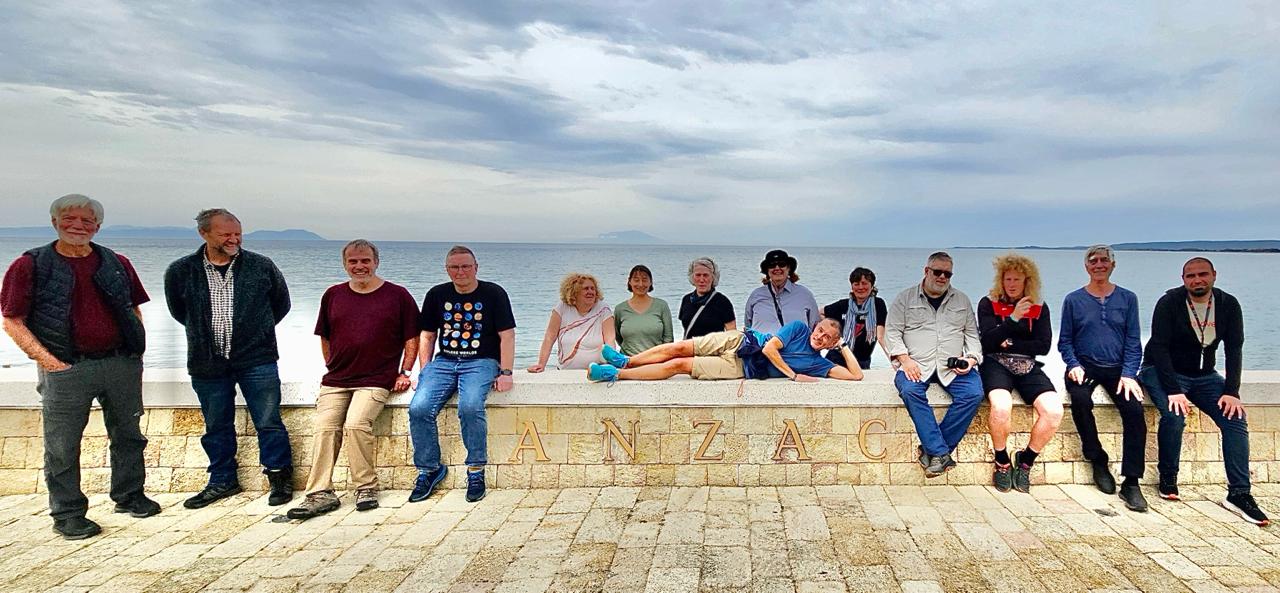

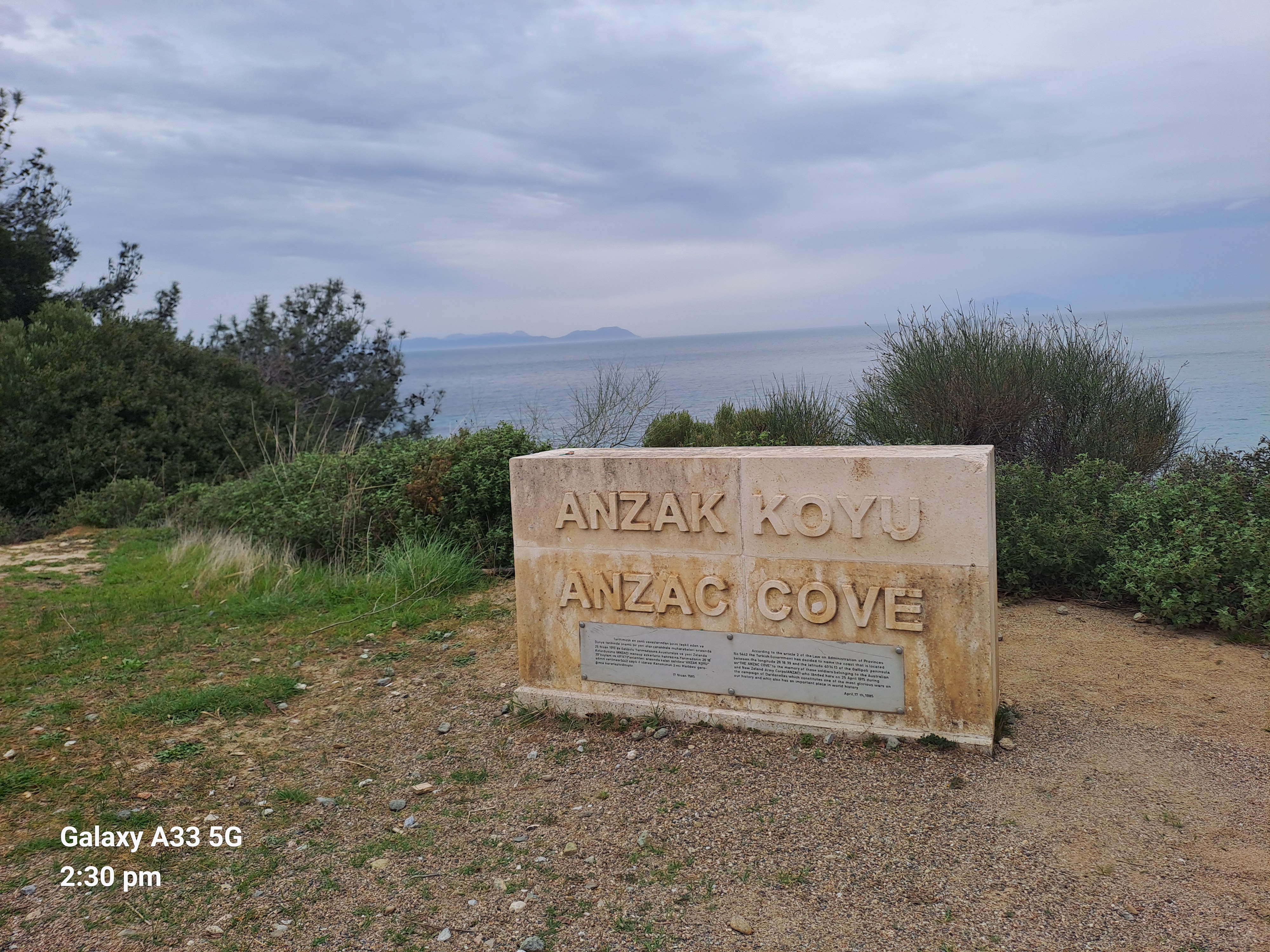
They landed at what is now known as Anzac Cove and battled to gain the heights. Both sides lost so many men. At times the trenches were only 8m apart. However, despite the fighting, food and cigarette swaps between the forces were organised at times and wounded were helped.
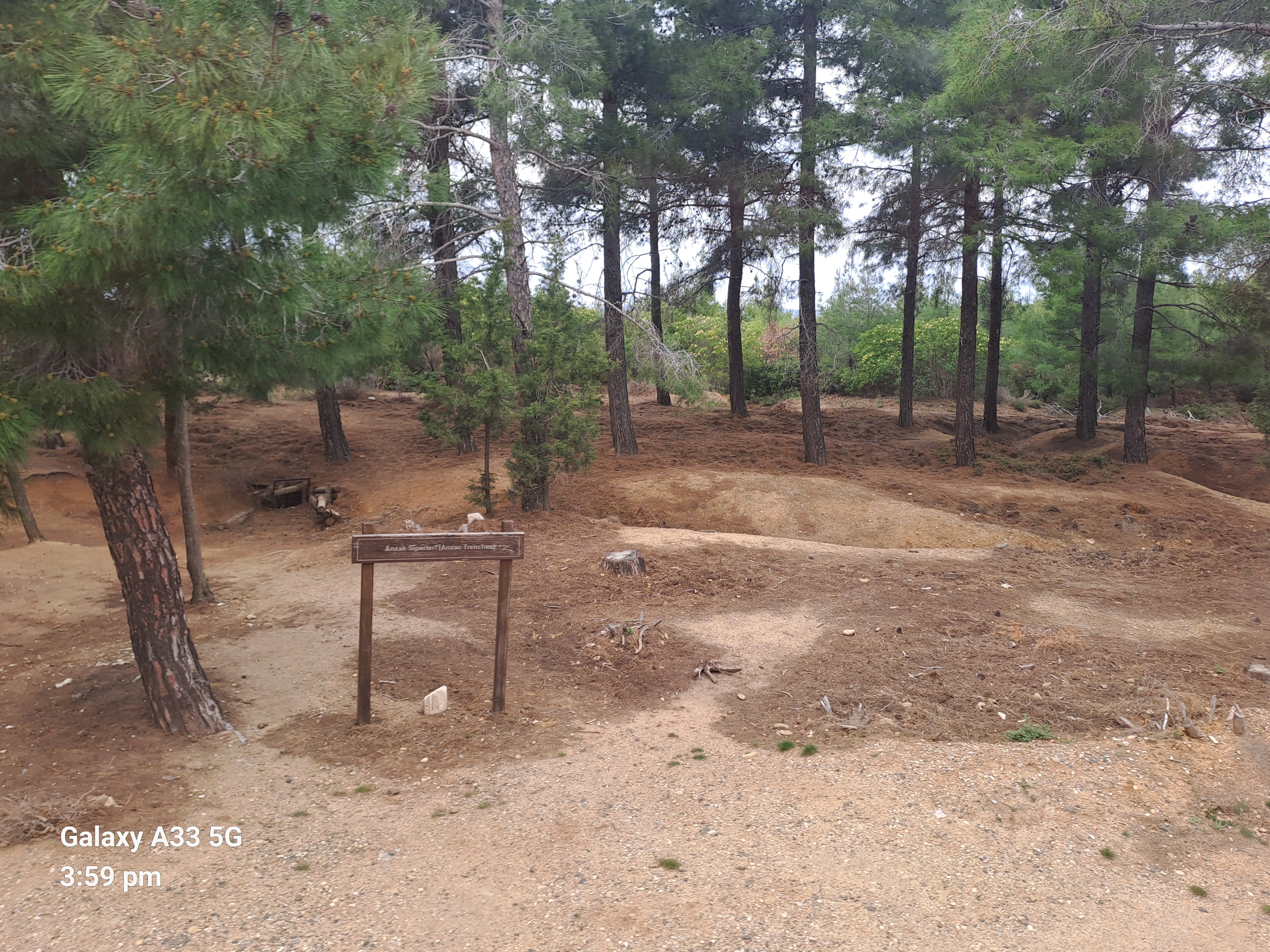

Thus is where Attaturk – later to become leader of Turkey, made his name, leading a battle charge. His pocket watch saved him by taking the bullet which would have killed him.
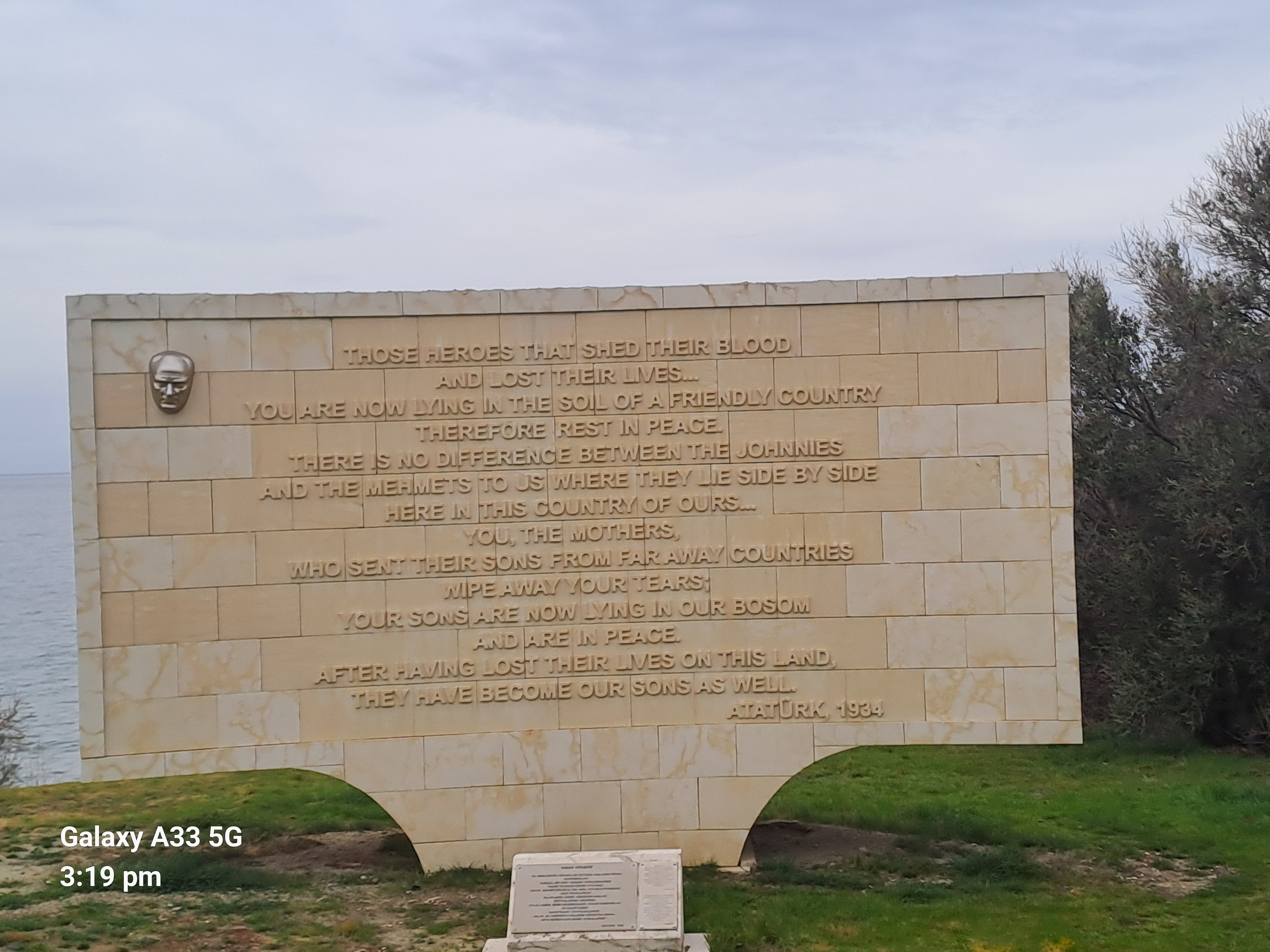
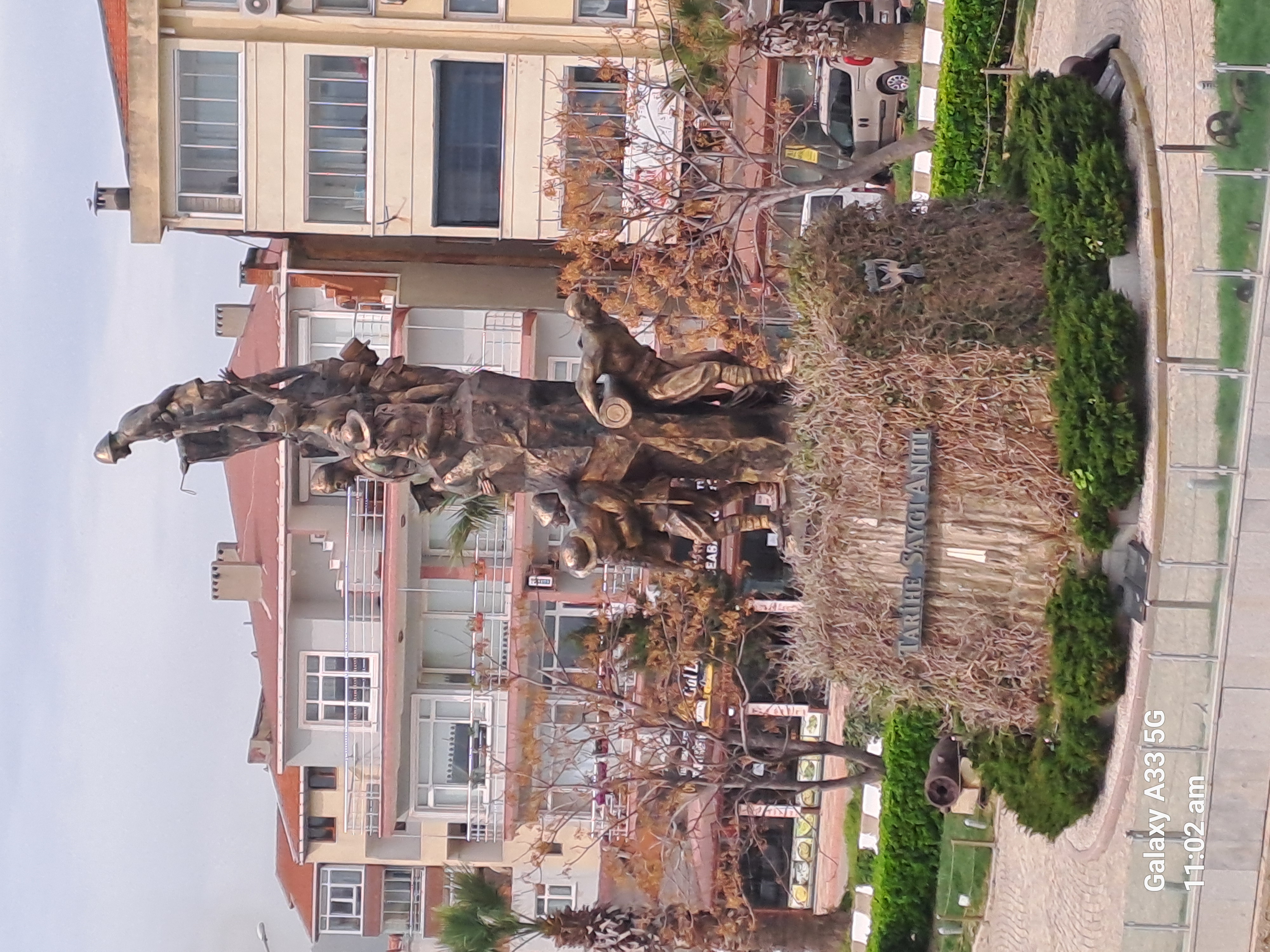
Seeing the sites of the battlefields and visiting the museum was vary moving and distressing, thinking things don’t change there is always another war. The qote “young men die while old men talk” came to mind. It turns out this is attributed to Odysseus, which brings us to the other side of the straits.
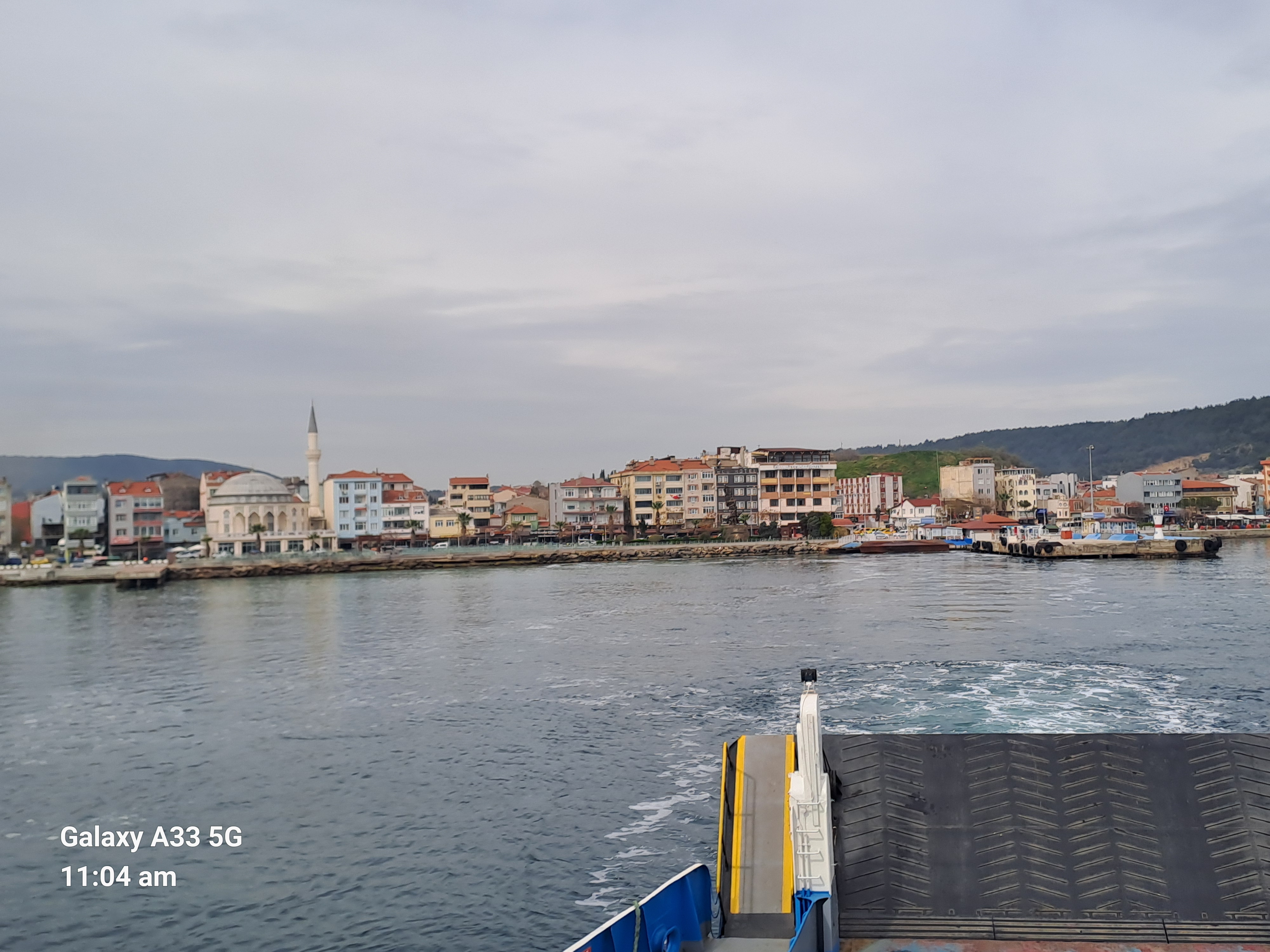
We had an easy trip over in the ferry and off to Troy the other side of the straights.
The site of Troy was lost for centuries and has been being excavated for the last 100 years. In ancient times it was a sea port. However, the sea is now at some distance and the nearby island now land locked.

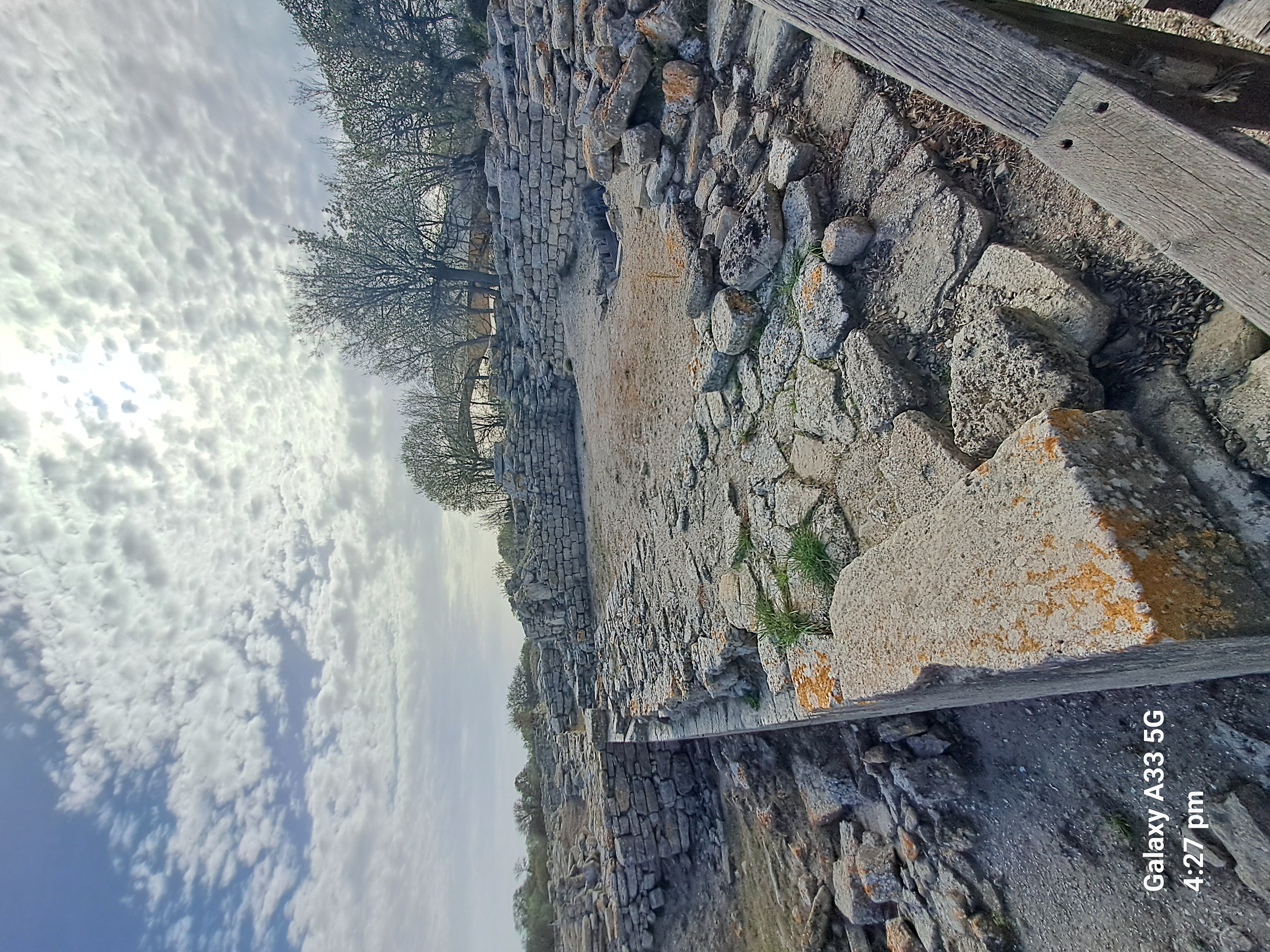
Troy is in fact 8 cities built on top of each other due to the importance of the location over many centuries. The Troy of the wooden horse is Troy 7 and after this Troy 8 a Roman city was built on top.
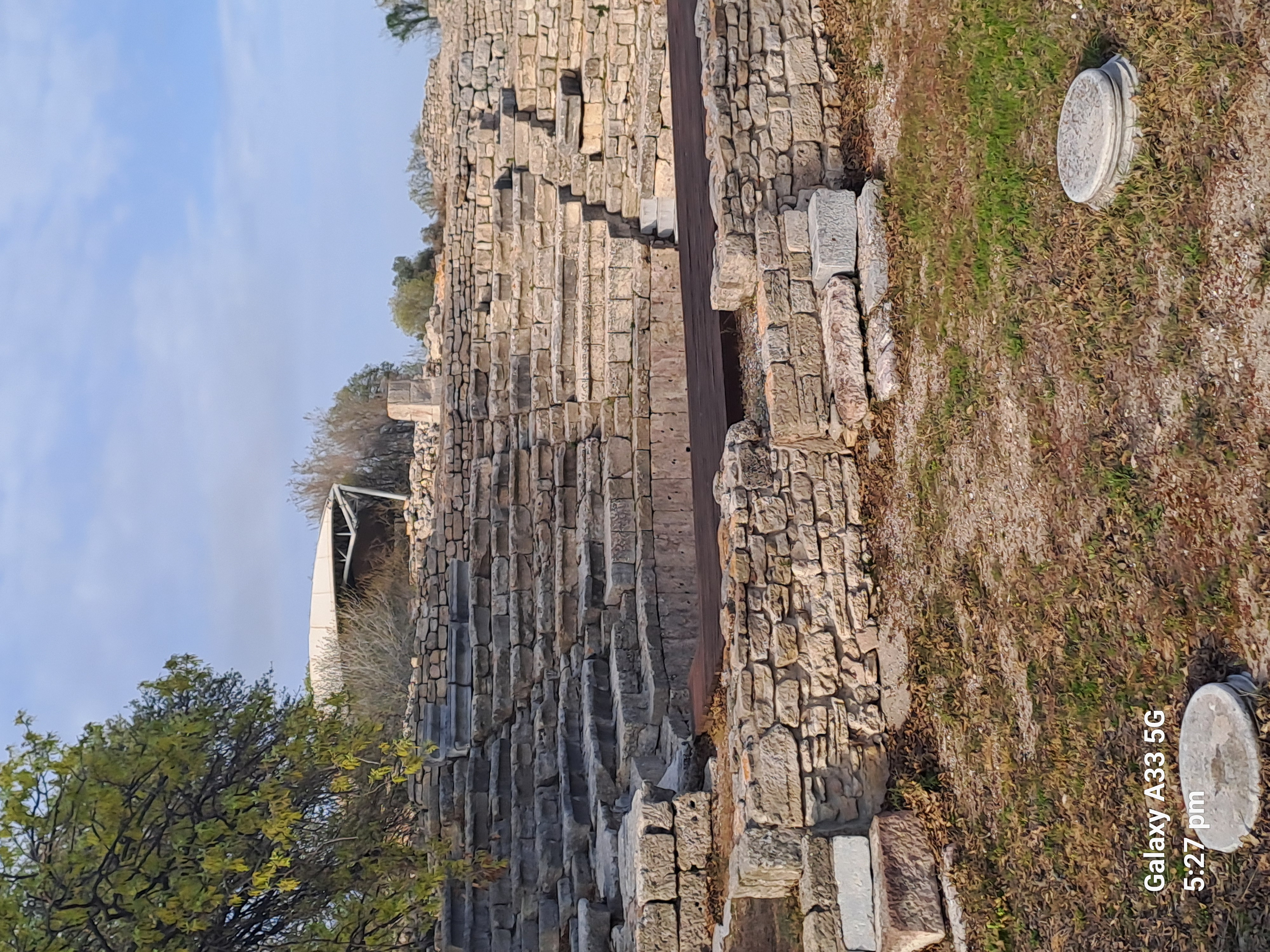



Excavation is slow and painstaking working out what to preserve it is expected to take many decades of slow uncovering. The location can be determined by reference to the Illiad and how it describes the surroundings.
The hills in the distance are apparently where the opposition camped out. So much further than I’d imagined.

We also went to the Troy museum

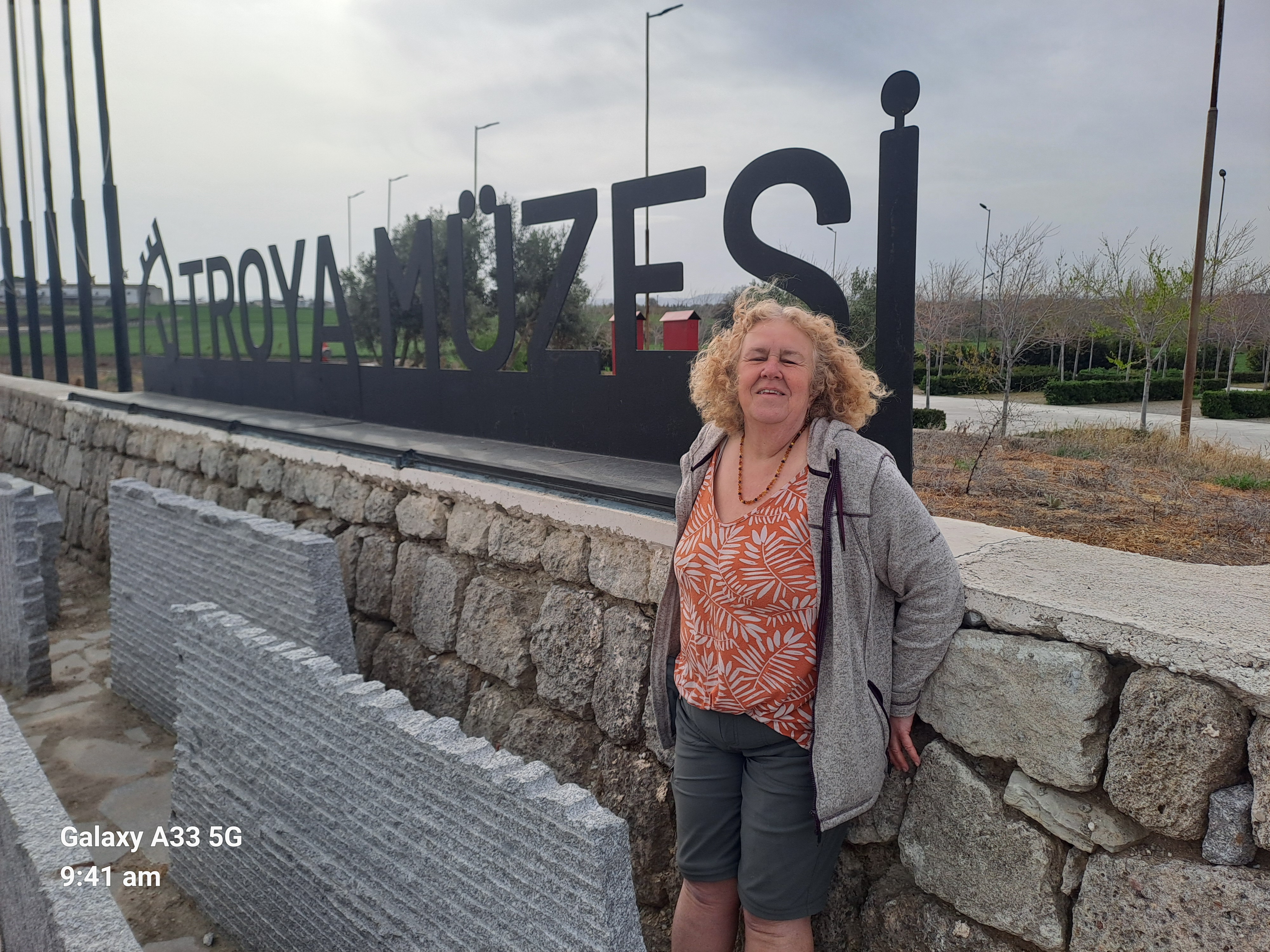
Next stop was Ephesus, where we got attacked as soon as we arrived! Hoards of blood thirsty mosquitoes latched onto us before we could get the mozzie spray out
The reason why, we discovered is that Ephesus has suffered the same fate as Troy and is no longer by the sea. Instead there are plentiful wetlands around where the sea was.
We visited the ruins and saw the excellent Ephesus show telling us about the city.
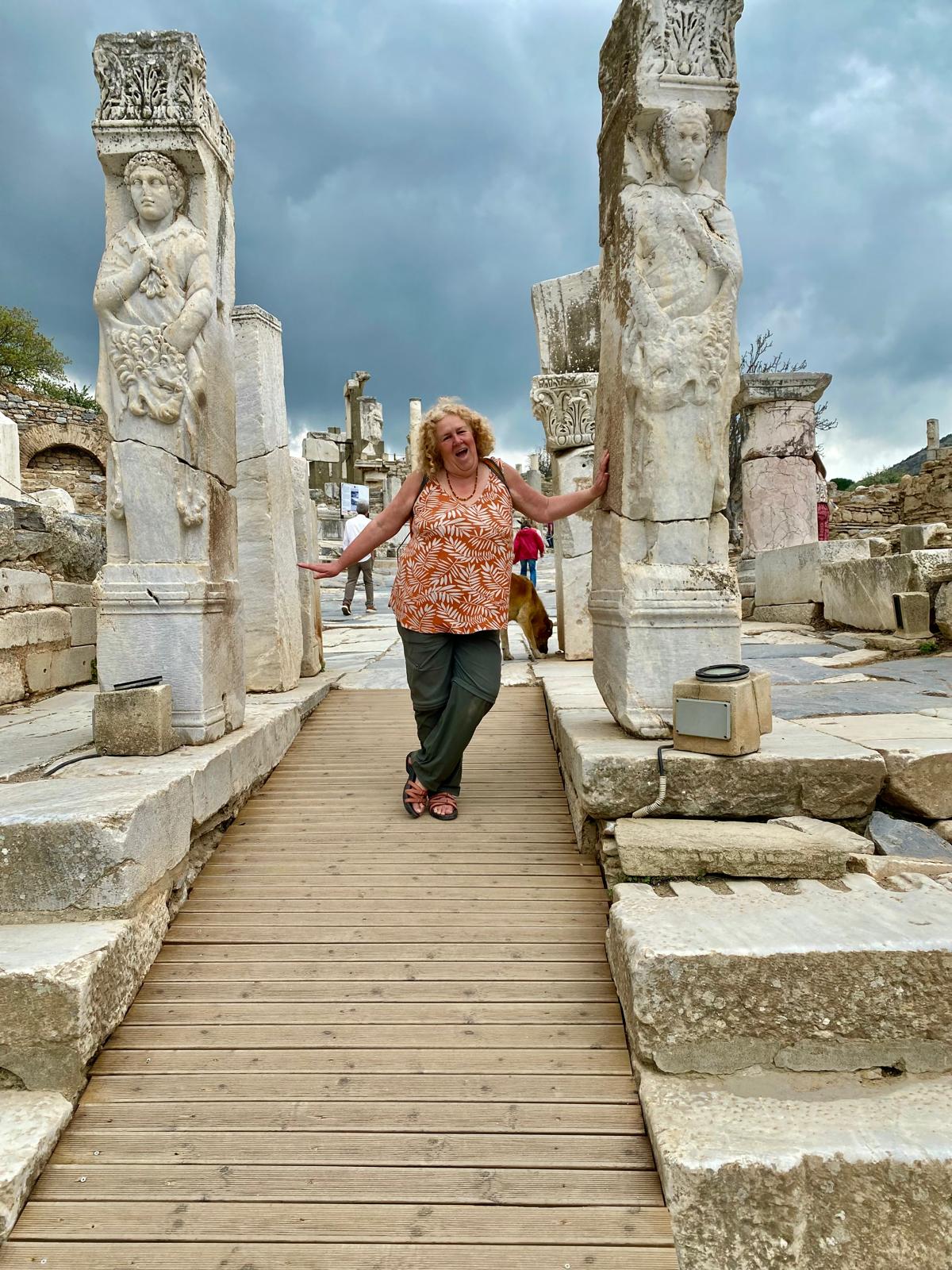
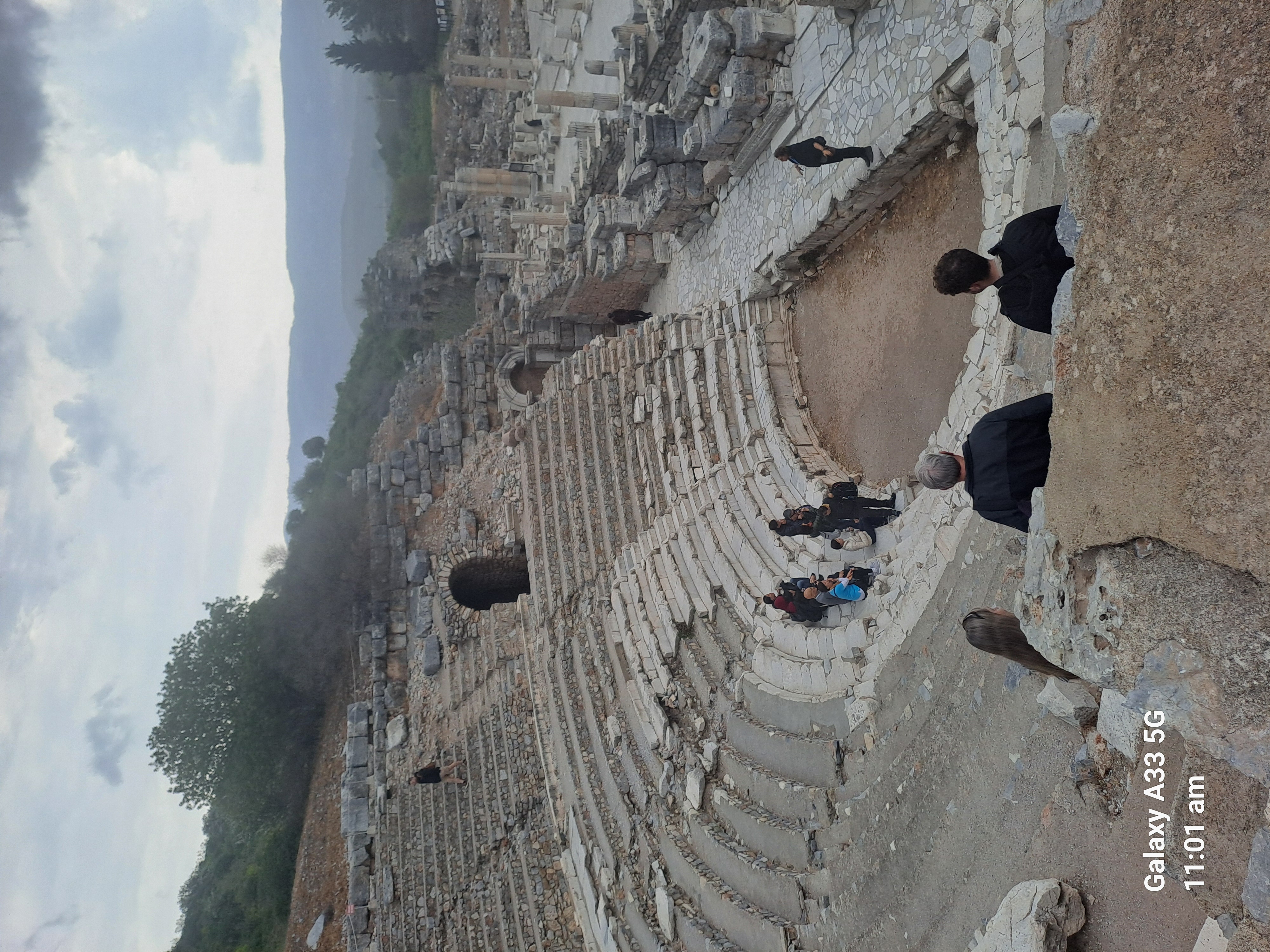



The city was dedicated to Artimis, goddess if fertility
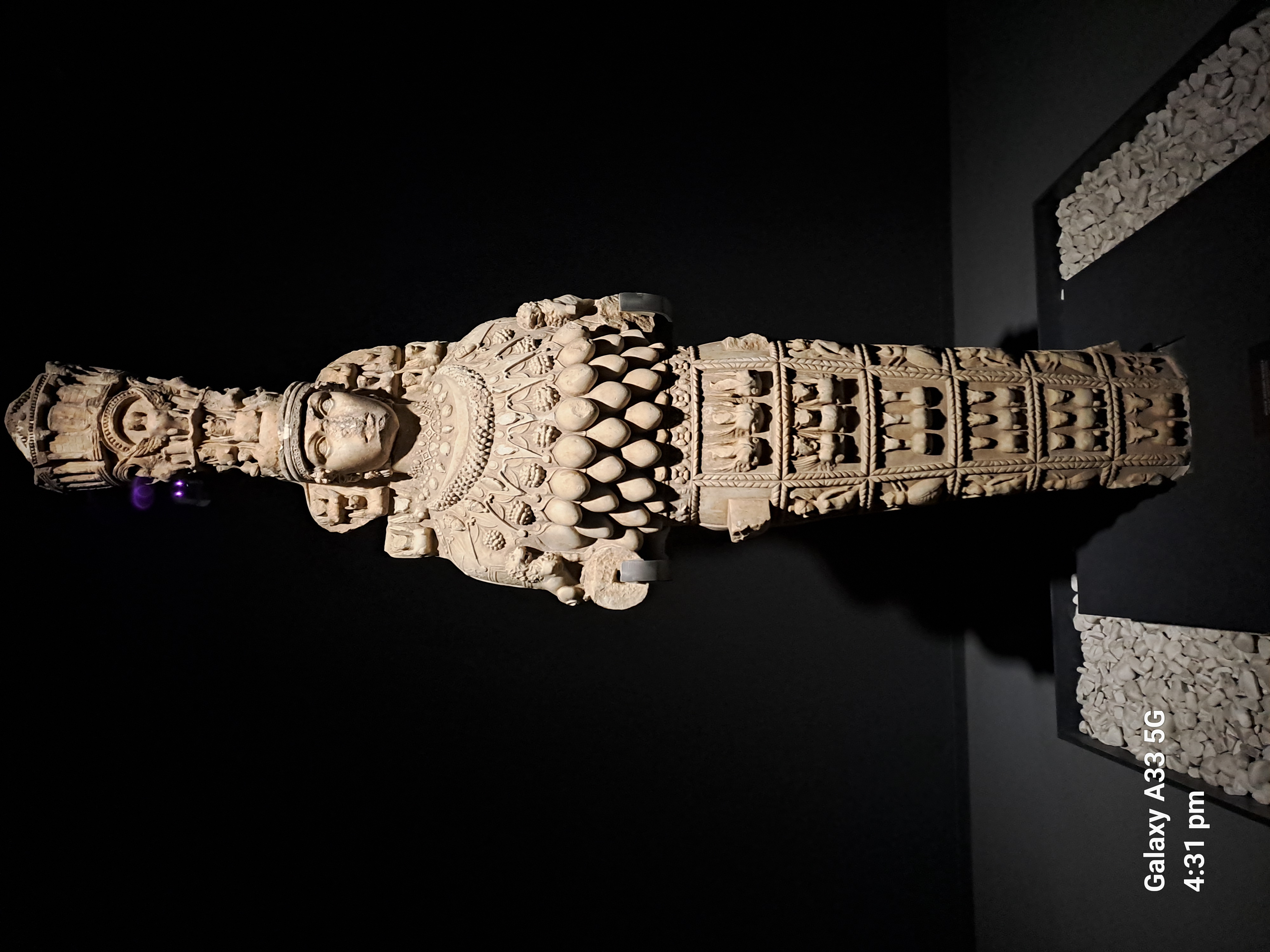
but is famous now through the ministry of Paul. This features in the experience show and in the tours available. We were treated to an impromptu performance of ‘How great thou art’ by what we assume was a Korean church.

We discovered the latrine was communal with a long shelf for both sexes to share.
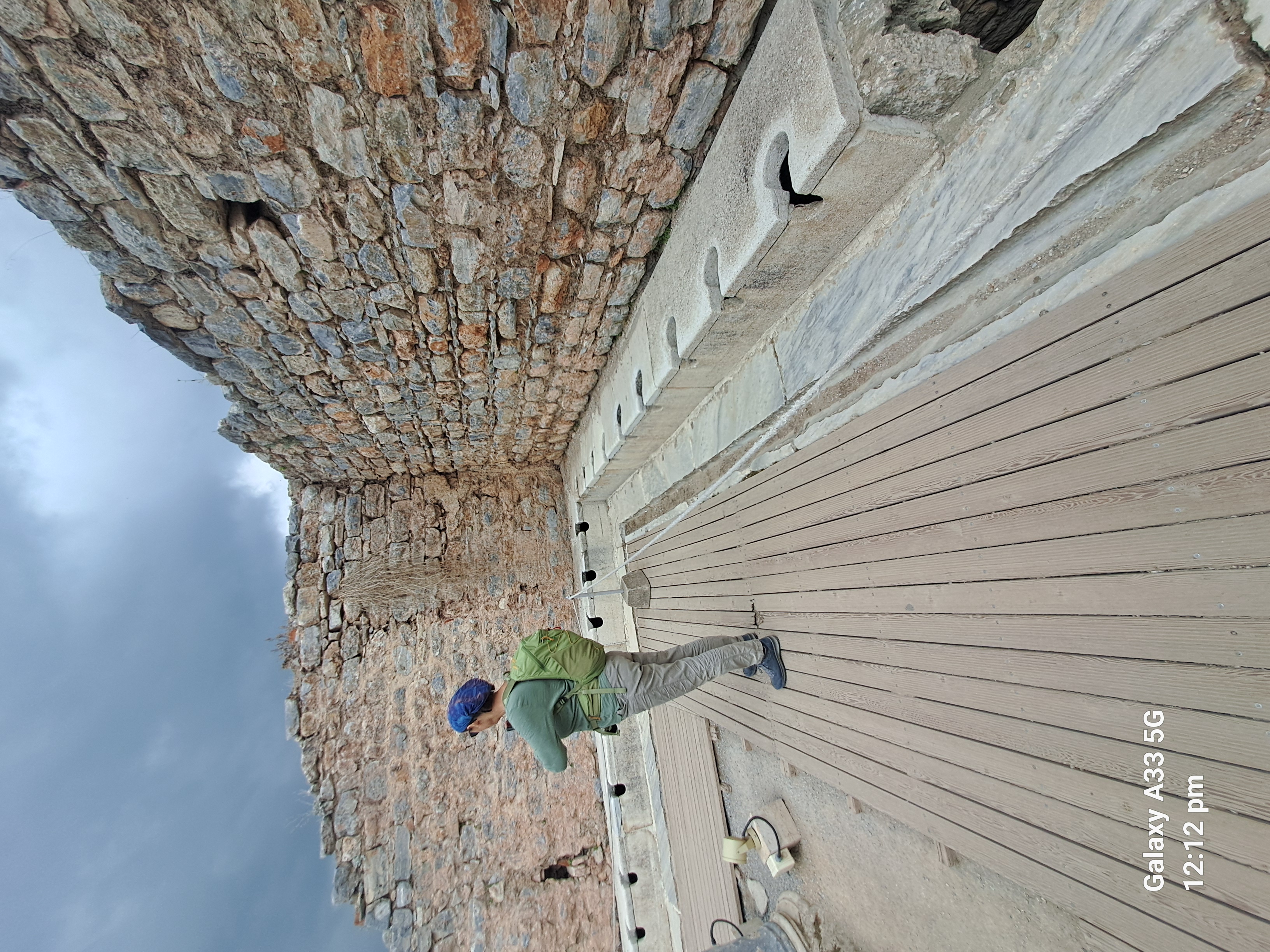
We also found the church and it’s baptism pool
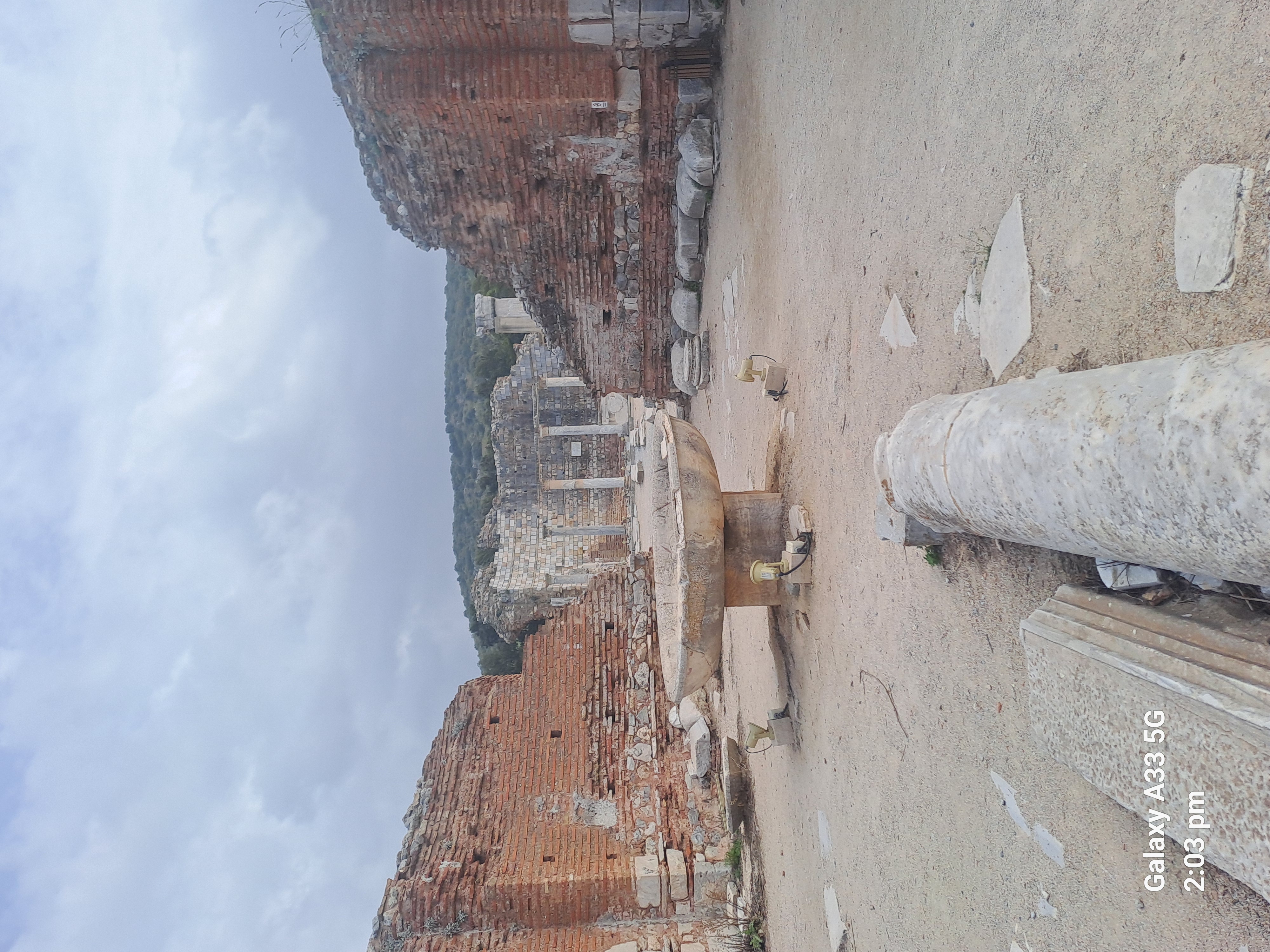
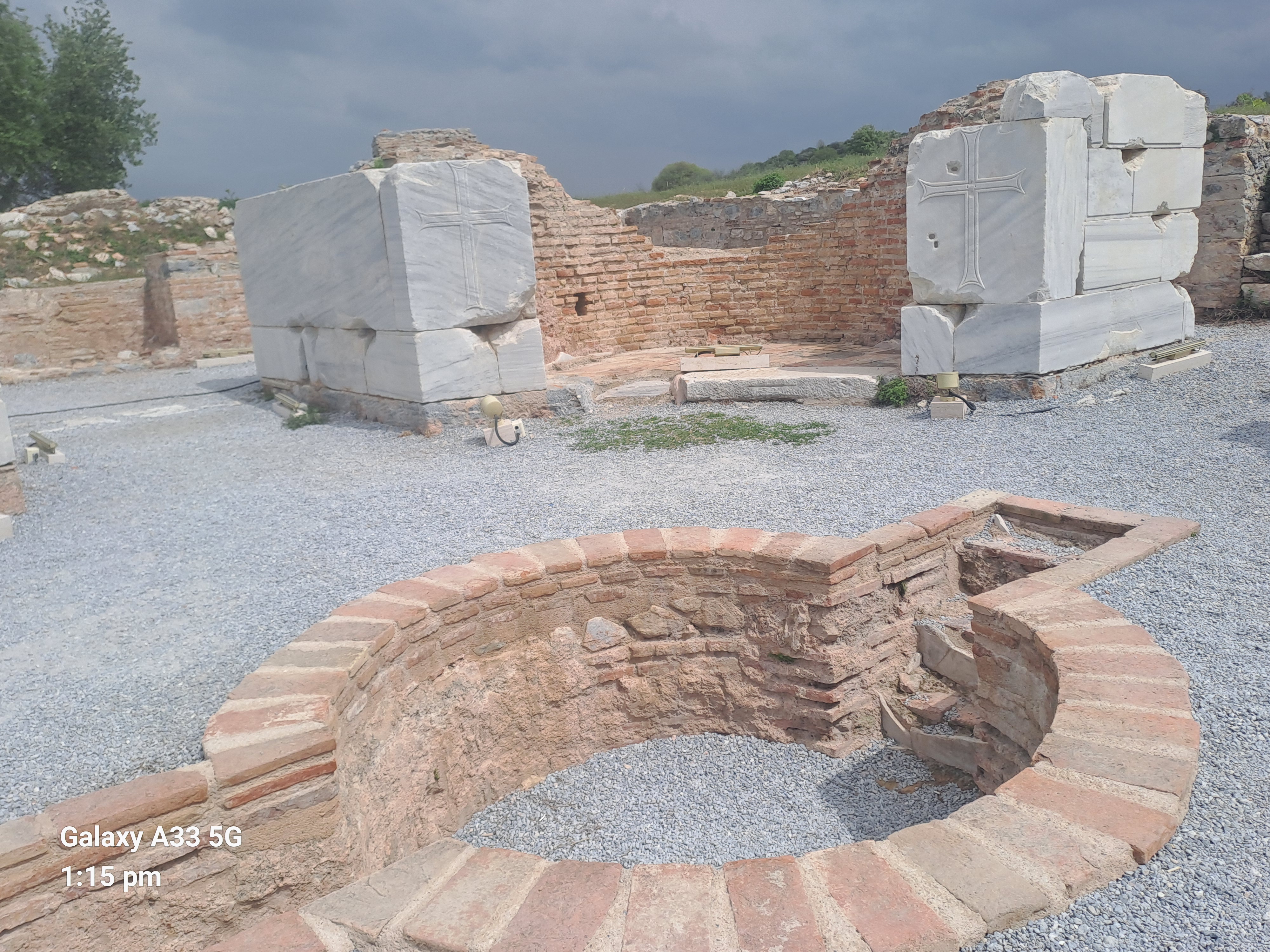
A quick trip to the temple of Artemis found that these days the one remaining column makes a good stork’s nest.


After Ephesus we went on to Pamukkale which is famous for it’s hot springs and thermal bath. The springs have over hundreds or thousands of years left the hillside covered in white deposits which have formed pools which the area is famous for. You can see the white hillside from miles away.

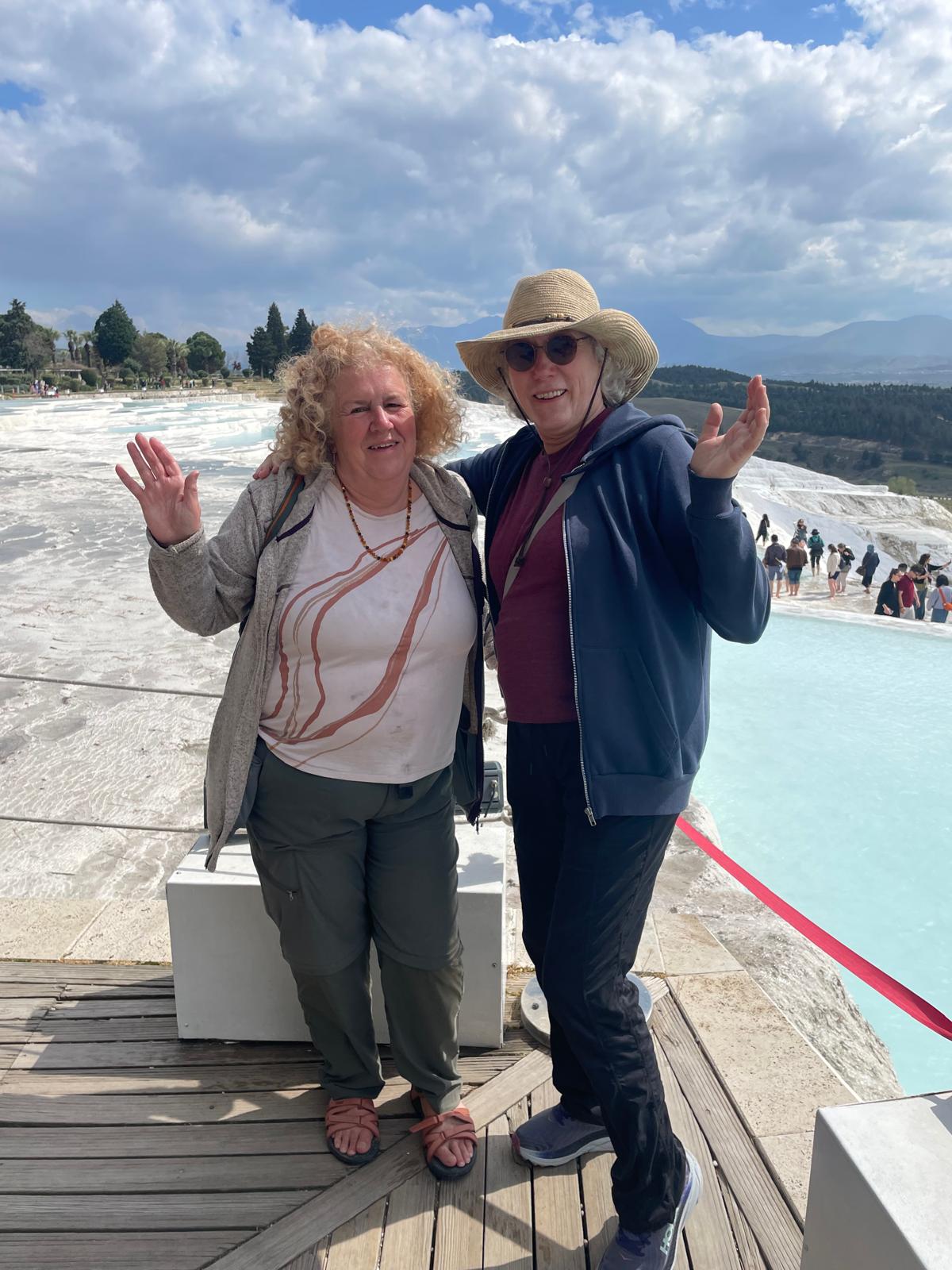
These springs attracted people in ancient times for the healing properties of the water and we saw ruins of another Roman town here. Before coming into this town it was necessary to wash for hygiene reasons.

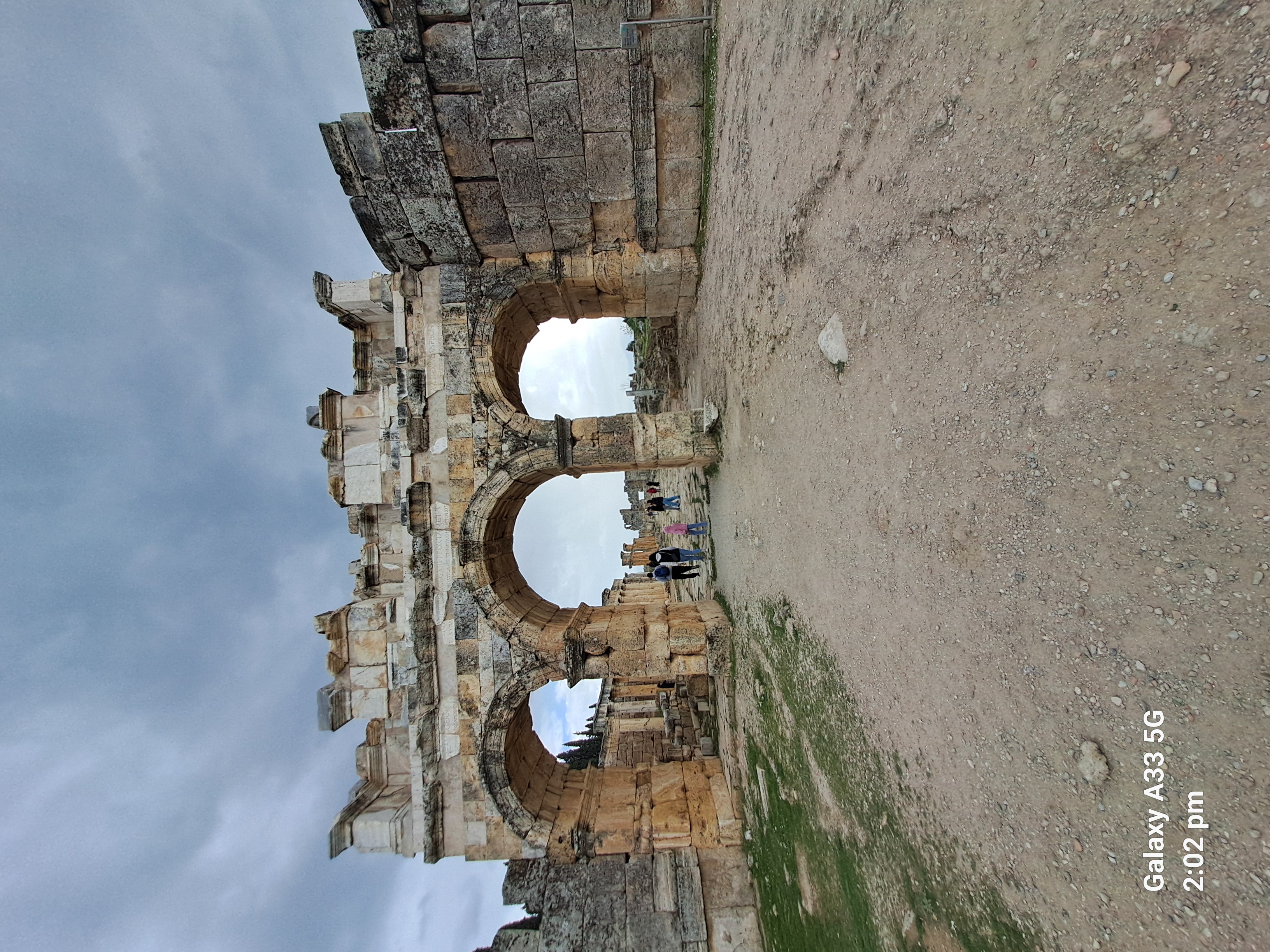
A big feature of the ruins was the large grave yard coveted with stone tombs. I began to wonder if we’d get to the actual town. Again there were the communal latrines.


We were hoping to have a bathe in the springs but unfortunately the baths were closed for renovation. It would have been my chance to use an actual Roman bath!
We were treated to a sight here as we left early the next morning. Balloons taking off and flying across in front of the white hillside.
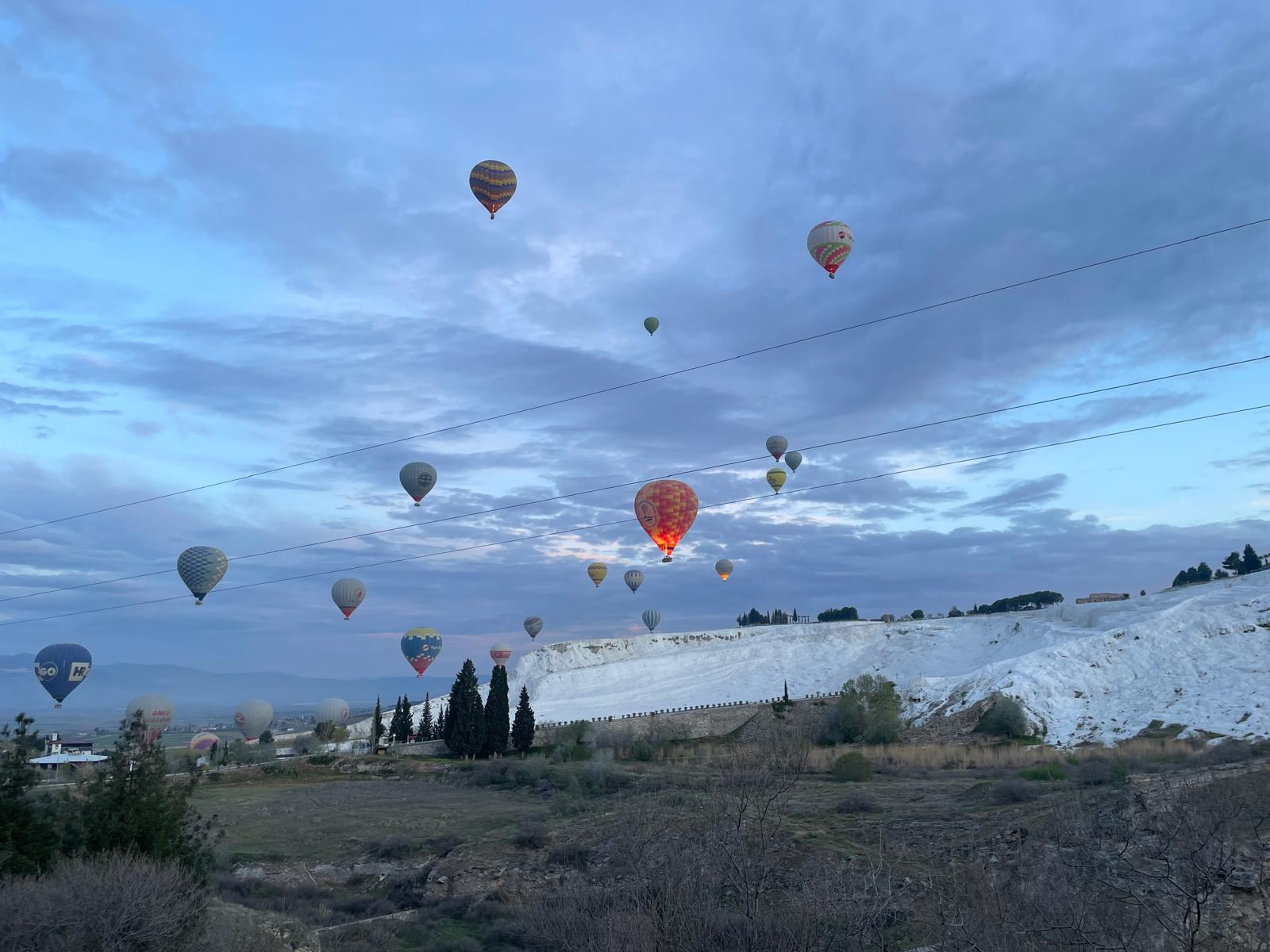
That day was a long drive day followed by a bush camp. It was cold and I felt ill (we were all gradually going down with the lurgy) but magically this tourists rep turned up and whisked us off to a hot spa down the road (for a fee) I arrived back lovely and warm and crawled into my sleeping bag feeling sooo much better.

This was where we started seeing caves, cave houses and cave churches everywhere.
The next morning was a chance for a walk in the countryside. At times being very much like the Wales coastal path by rushing streams. Then suddenly it would be caves and Turkish style cafes
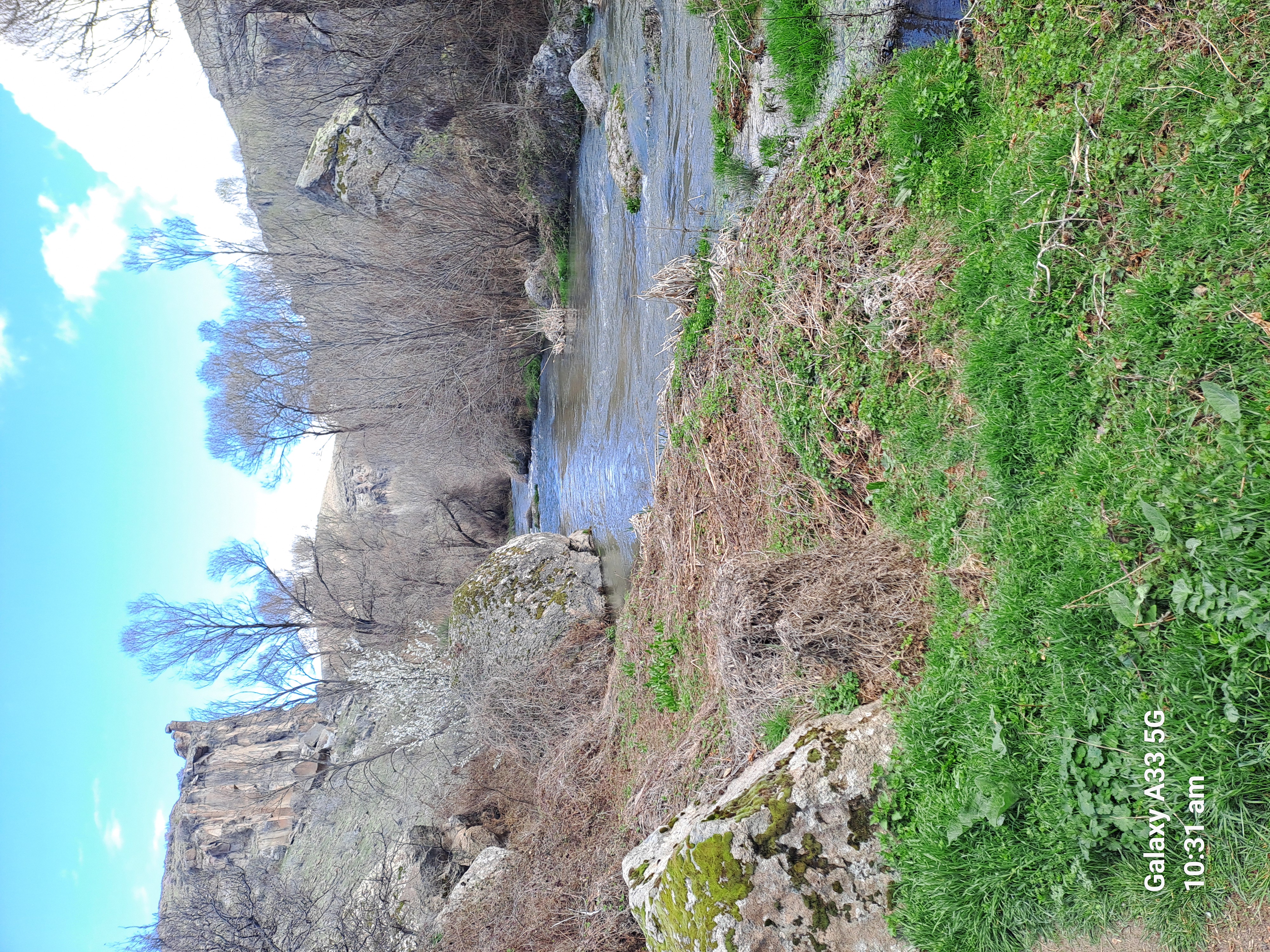

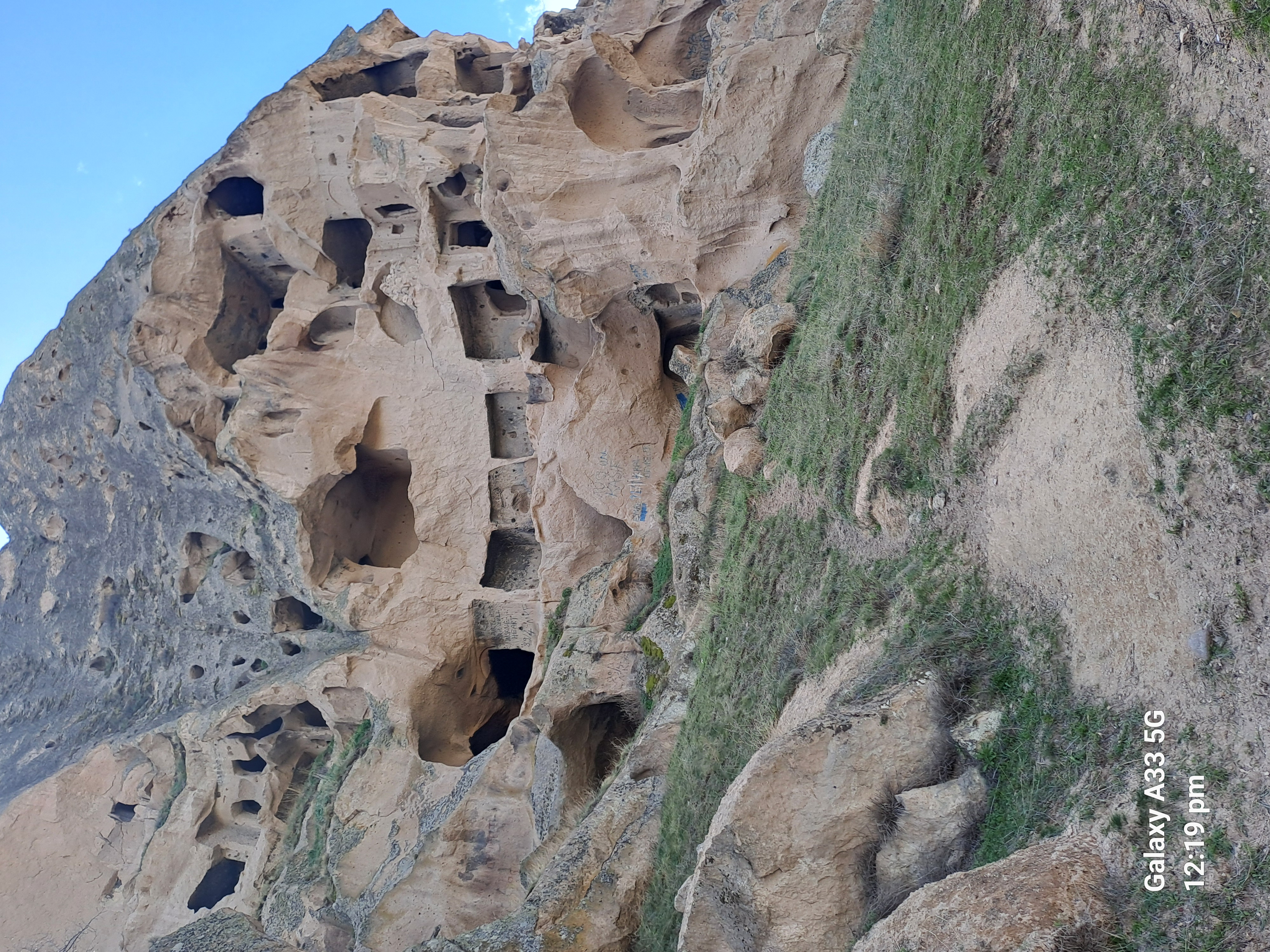
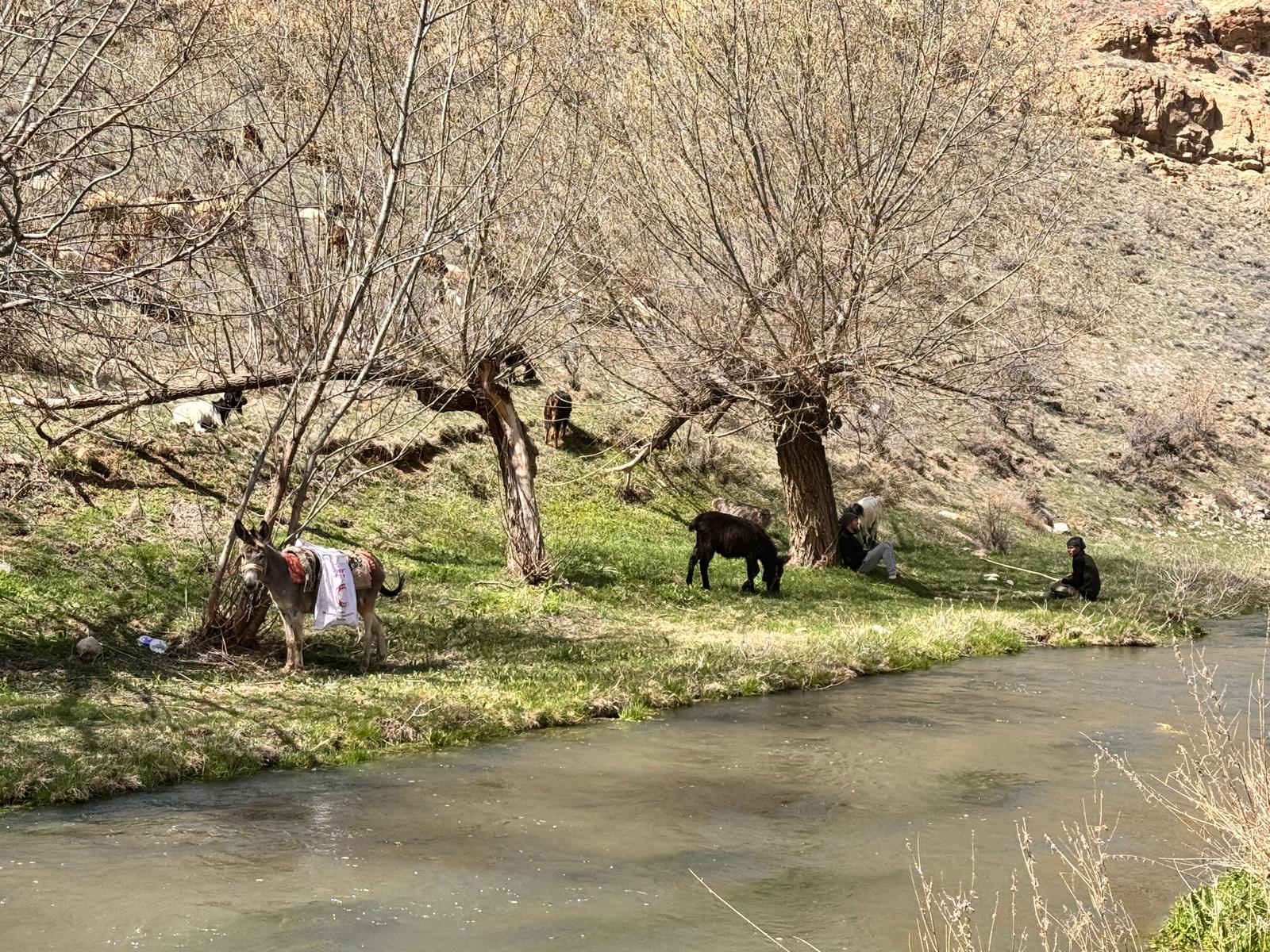
Half way around we got adopted by three of the ubiquitous large off white dogs of Turkey. They followed us for about 6k and wandered all over the road when we got back happily stopping cars.I think they then adopted someone else 😊
We were then on to Cappadocia for 3 nights and a bit of a rest. Cappadocia means land of horses. However, the main feature for us was the eroded stone landscape and all the caves.
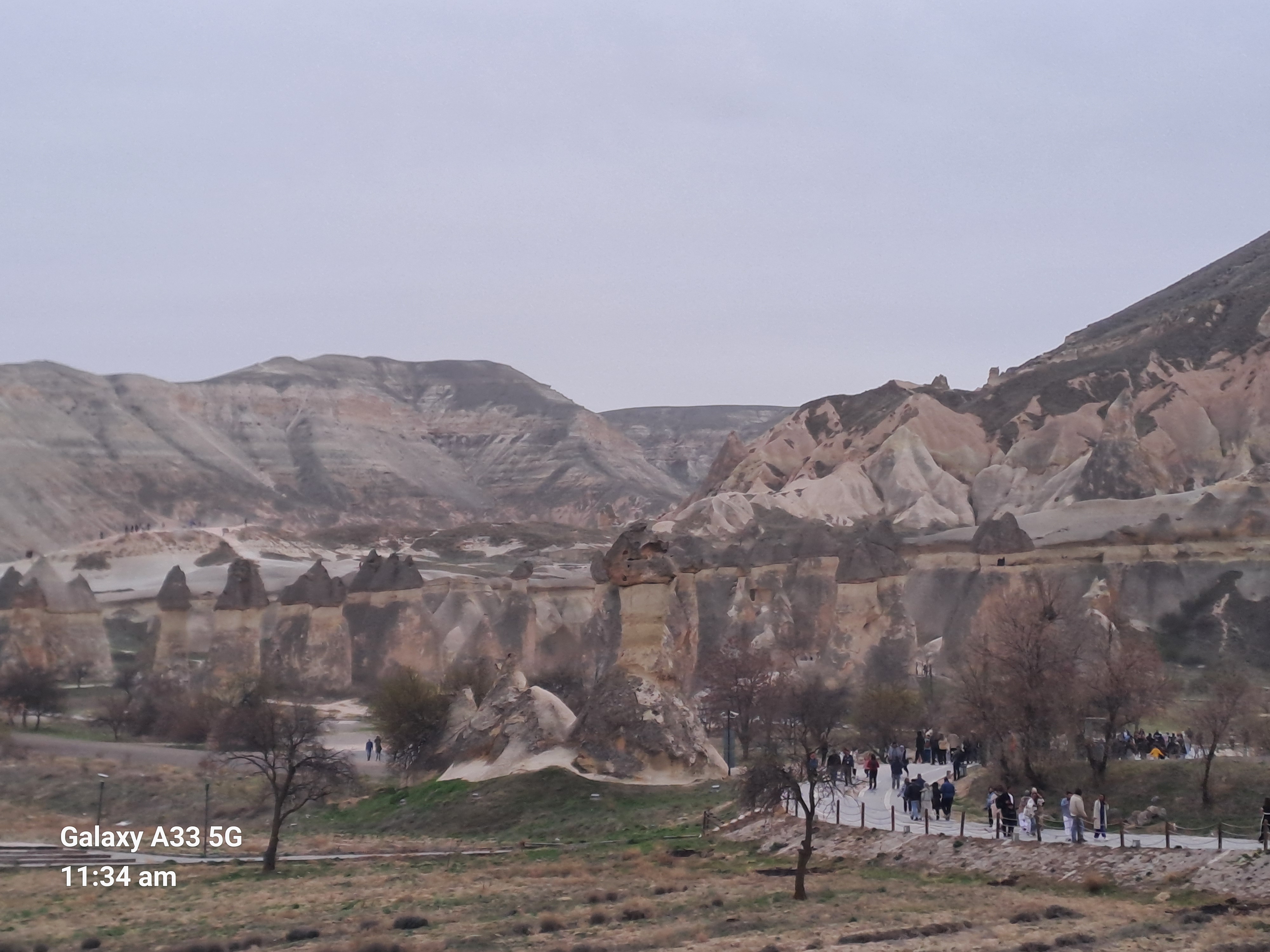
Apparently this natural feature is due to super volcanos millions of years ago. The Arabian tectonic plate pushed under Turkey and lifted it from under the Medterranian which was when things got lively. The volcano ash formed into rocks, with successive volcanos adding different coloured layers.

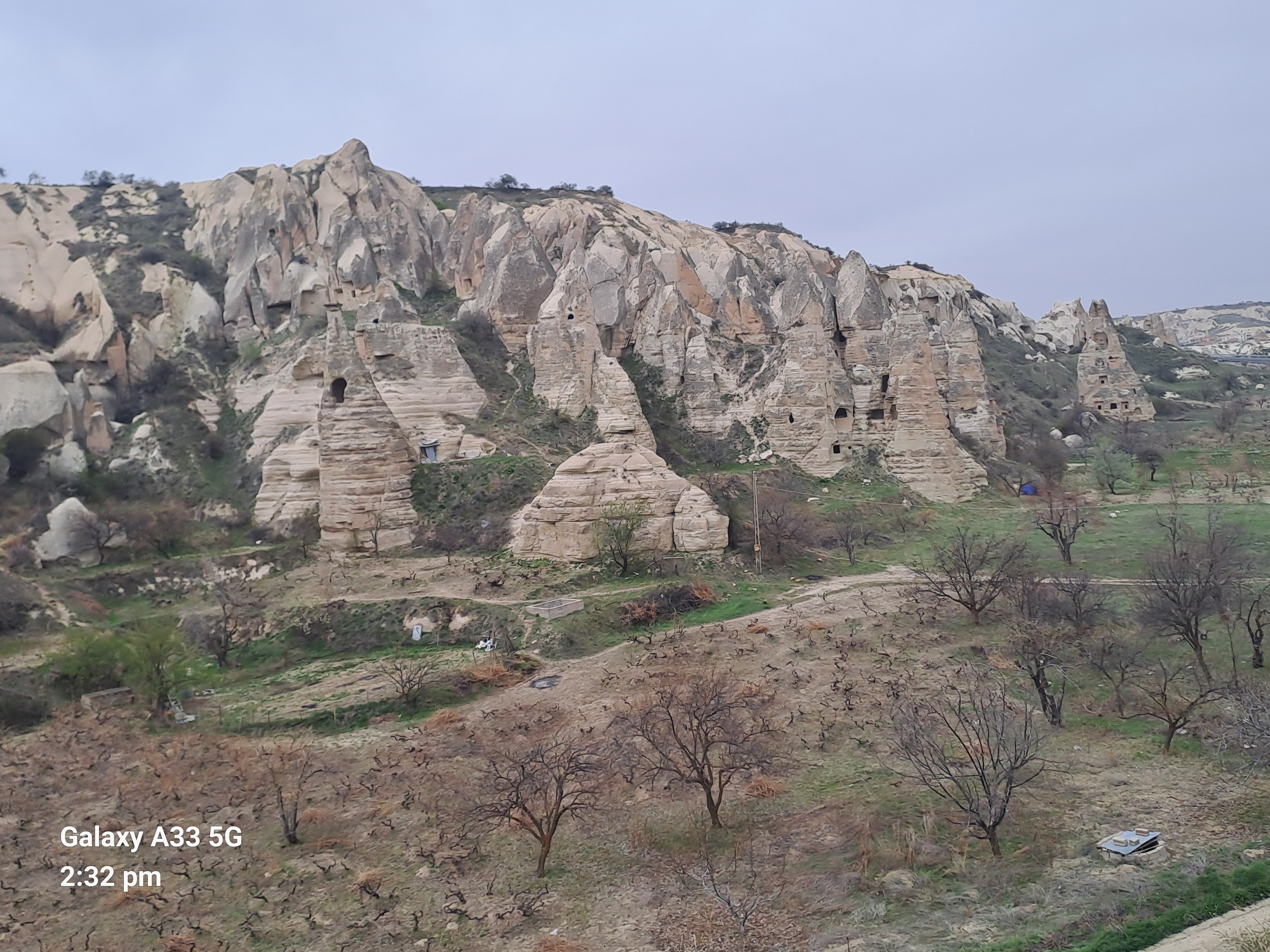
The stone has then eroded forming features such as the fairy chimneys.


Because the stone is fairly soft it has allowed dwellings and churches to be carved out of the stone.


We visited an under city usef for defence with narrow passagesj to prevent massed attack with stones that could block the passage.




We visited a monastery- now abandoned due to continued erosion.


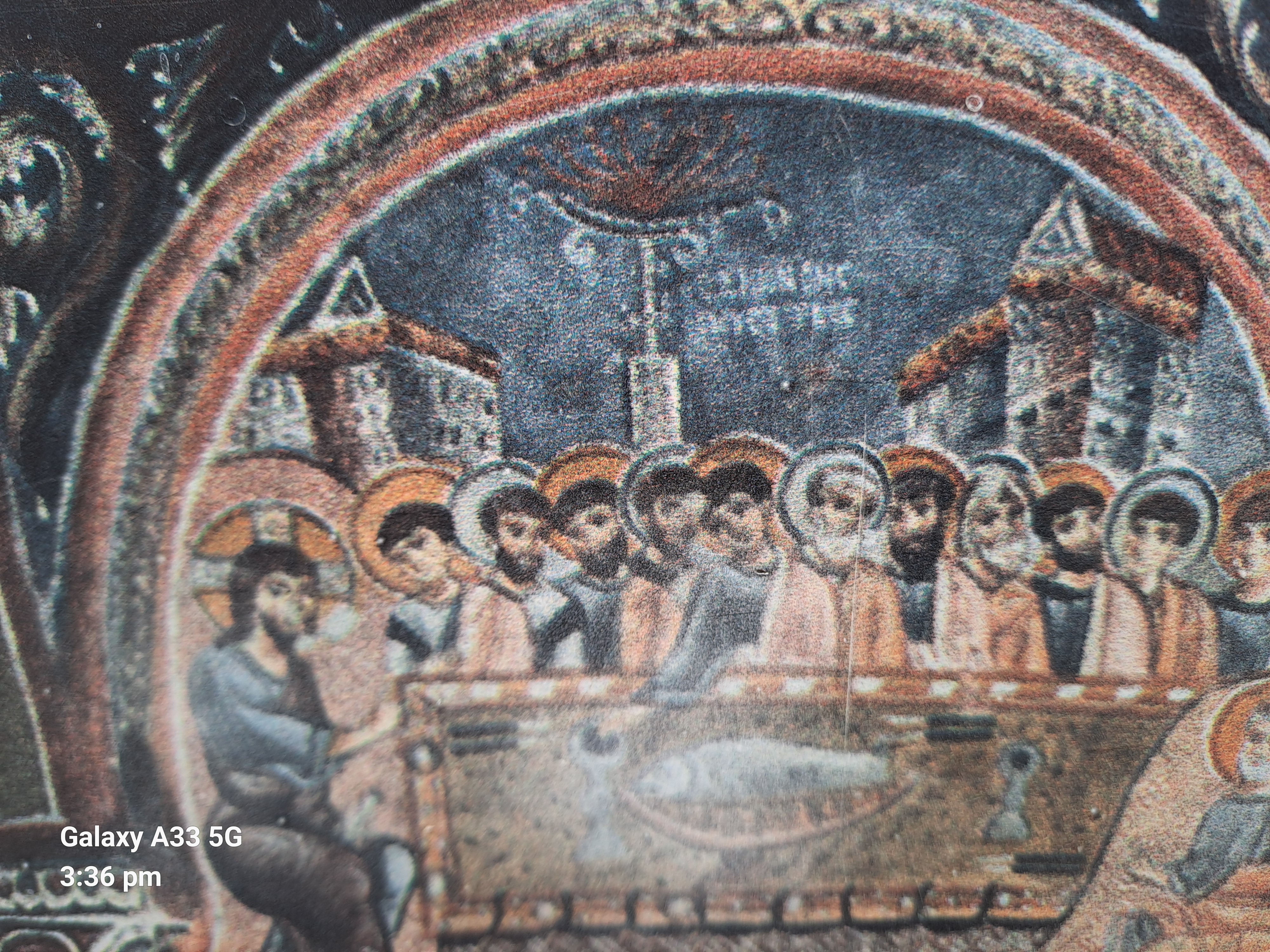
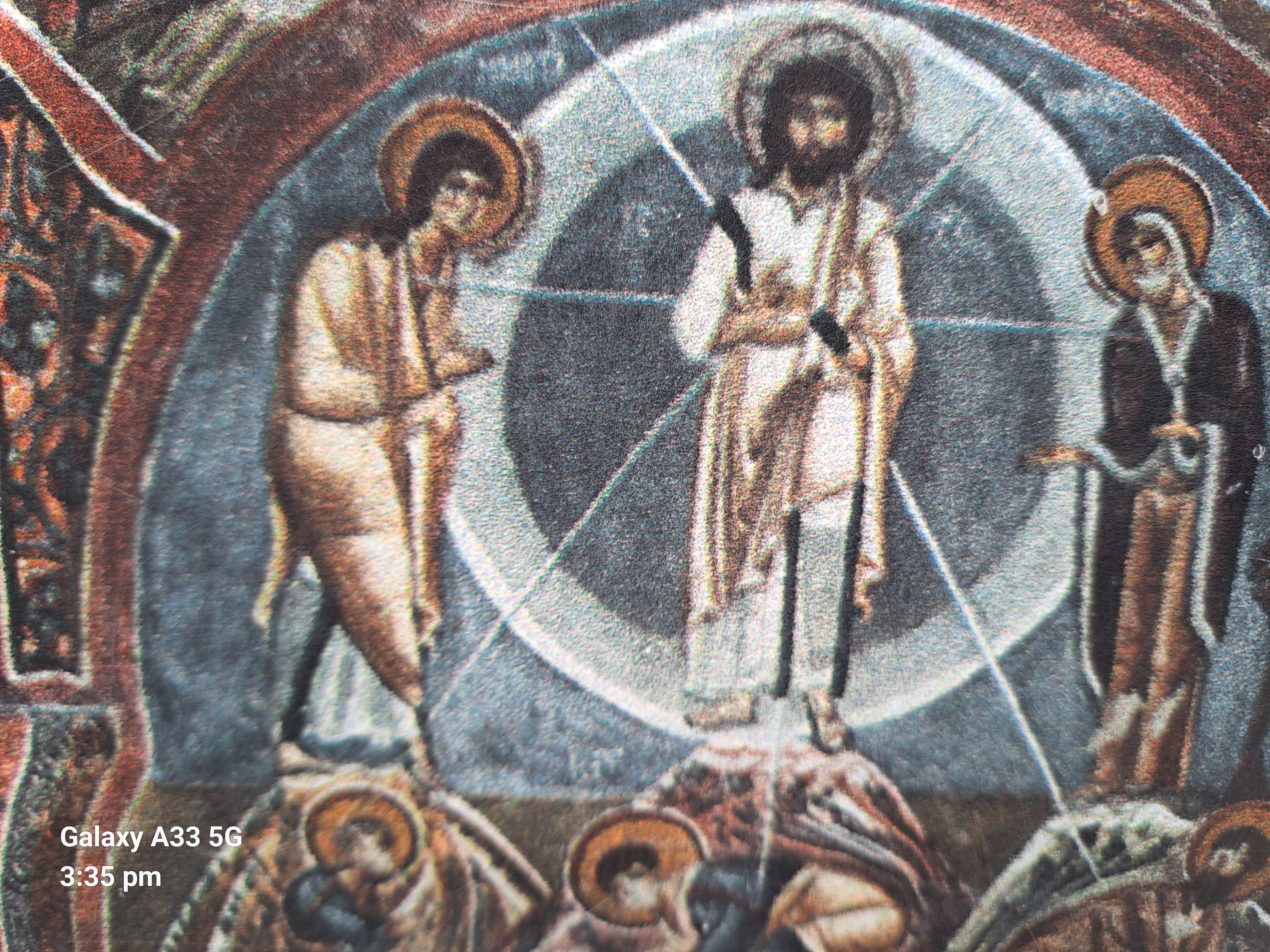
We saw many current homes part cave and part building.
Before we left we went out for a turkish evening, a meal and dancing

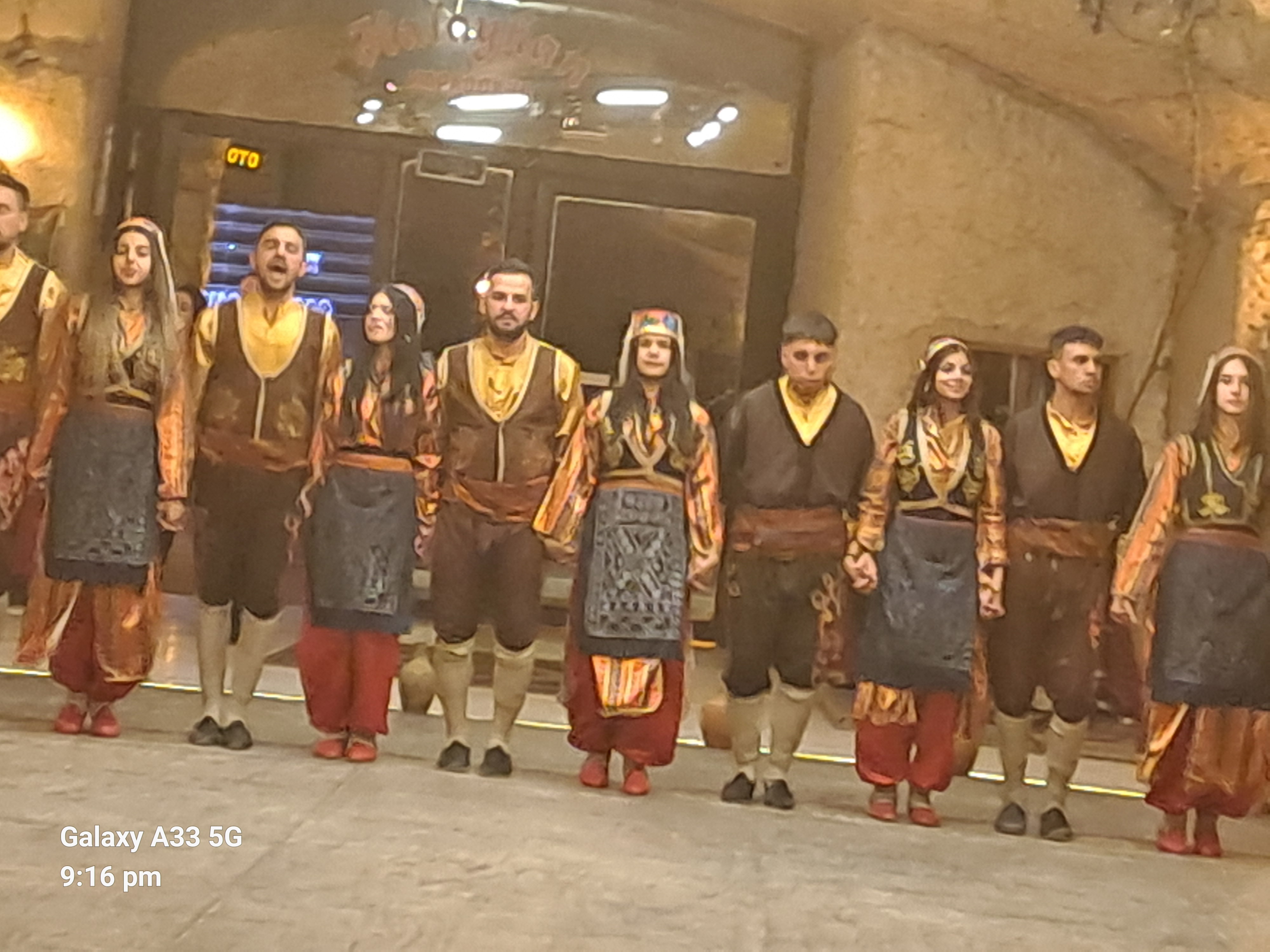


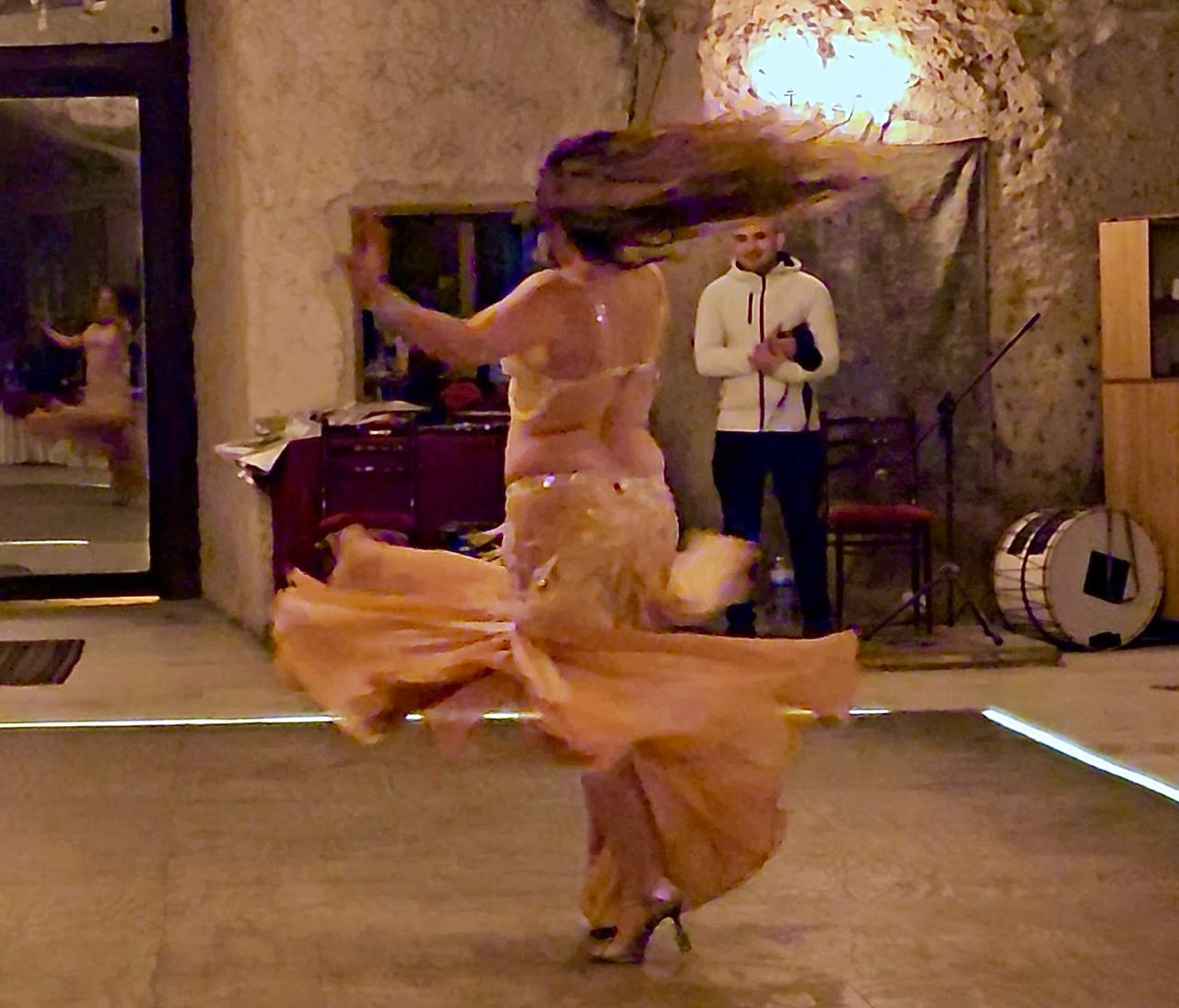

In theory we should have had a hot air balloon trip here, however the weather conspired against us and we couldn’t do it. It was nice to have a few nights in one place before settling off on another long drive and a very wet bush camp. This time no one popped up offering a hot spa.By now we were high in the mountains
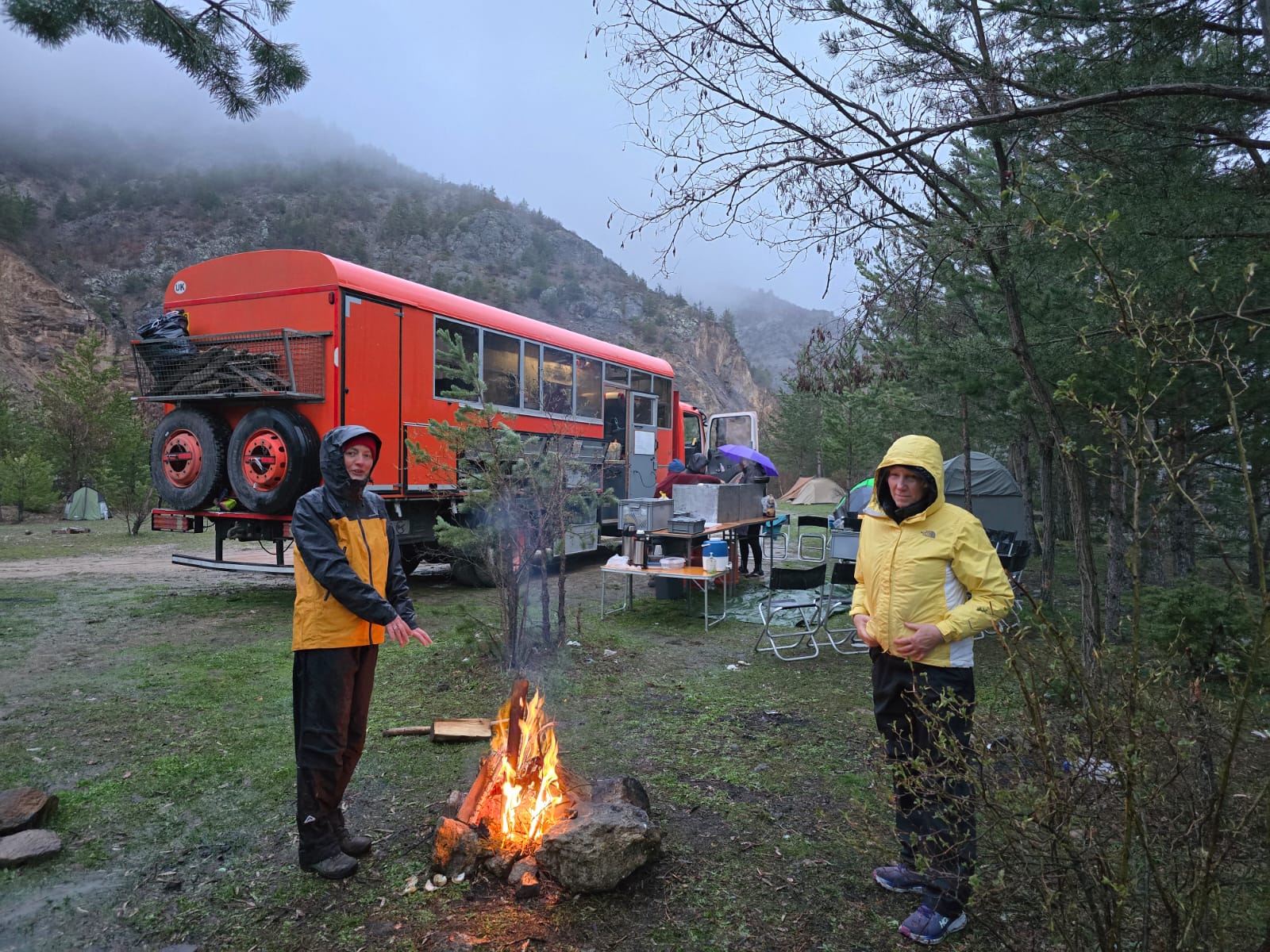

The next morning we visited Sumela monastery high up in the mountains. The later part of the journey was by the local mini bus up the steep winding road and then we walked the last part.

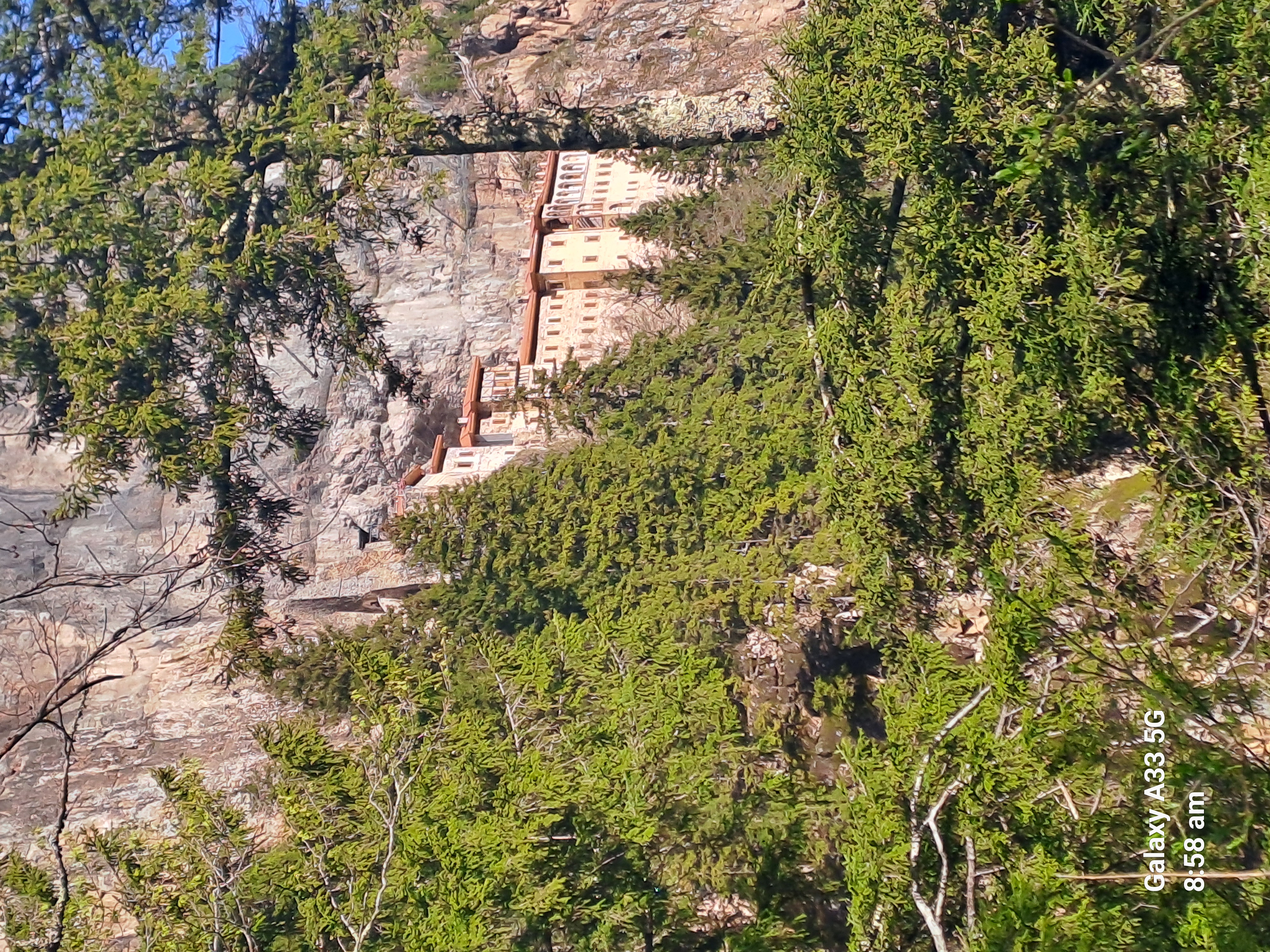


It had been founded in the 600s and seen as such positive influence that it was allowed to flourish under the Ottoman empire. It was only finally abandoned in 1923 under an exchange of Greek and Turkish people .
This was the day the leaves suddenly burst out and the trees turned green. We wound our way down hill to the coast and along to the border with Georgia.
